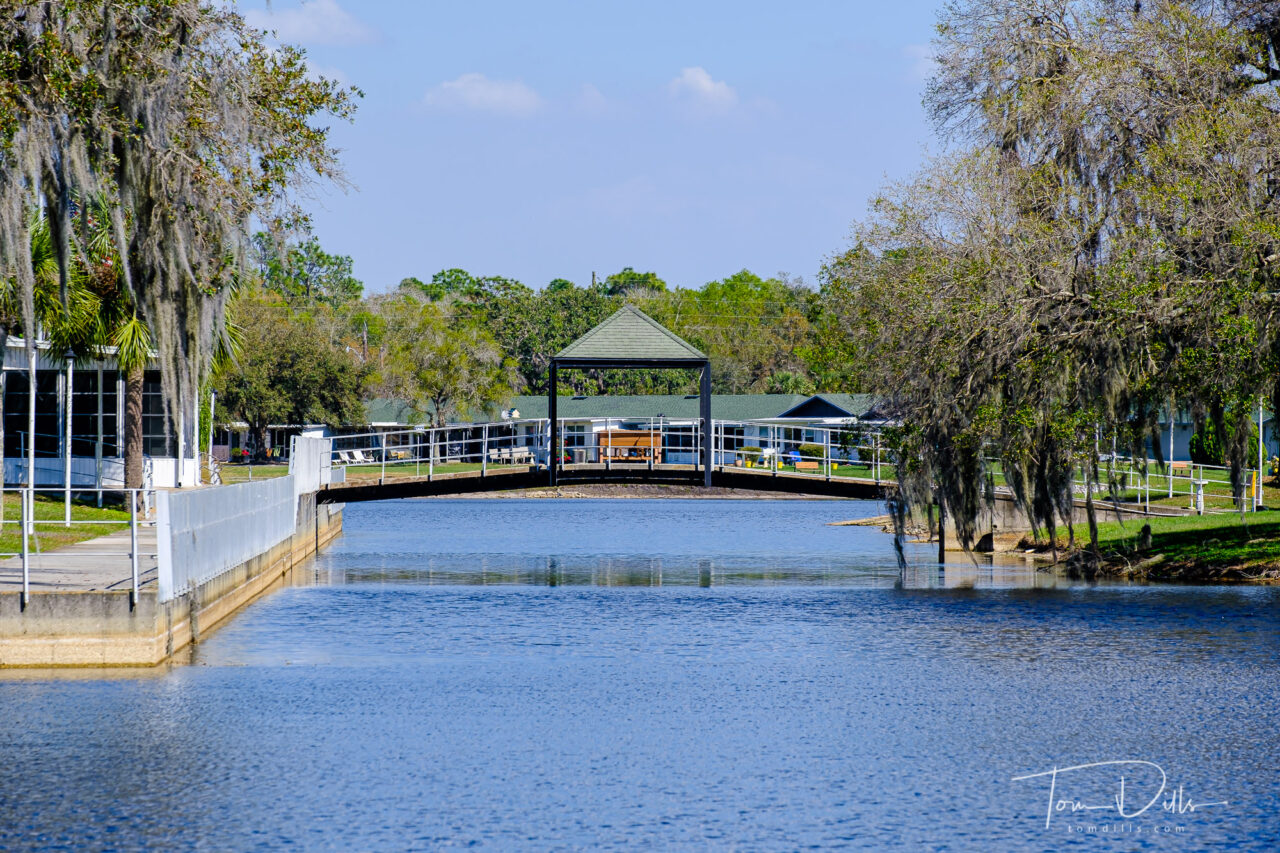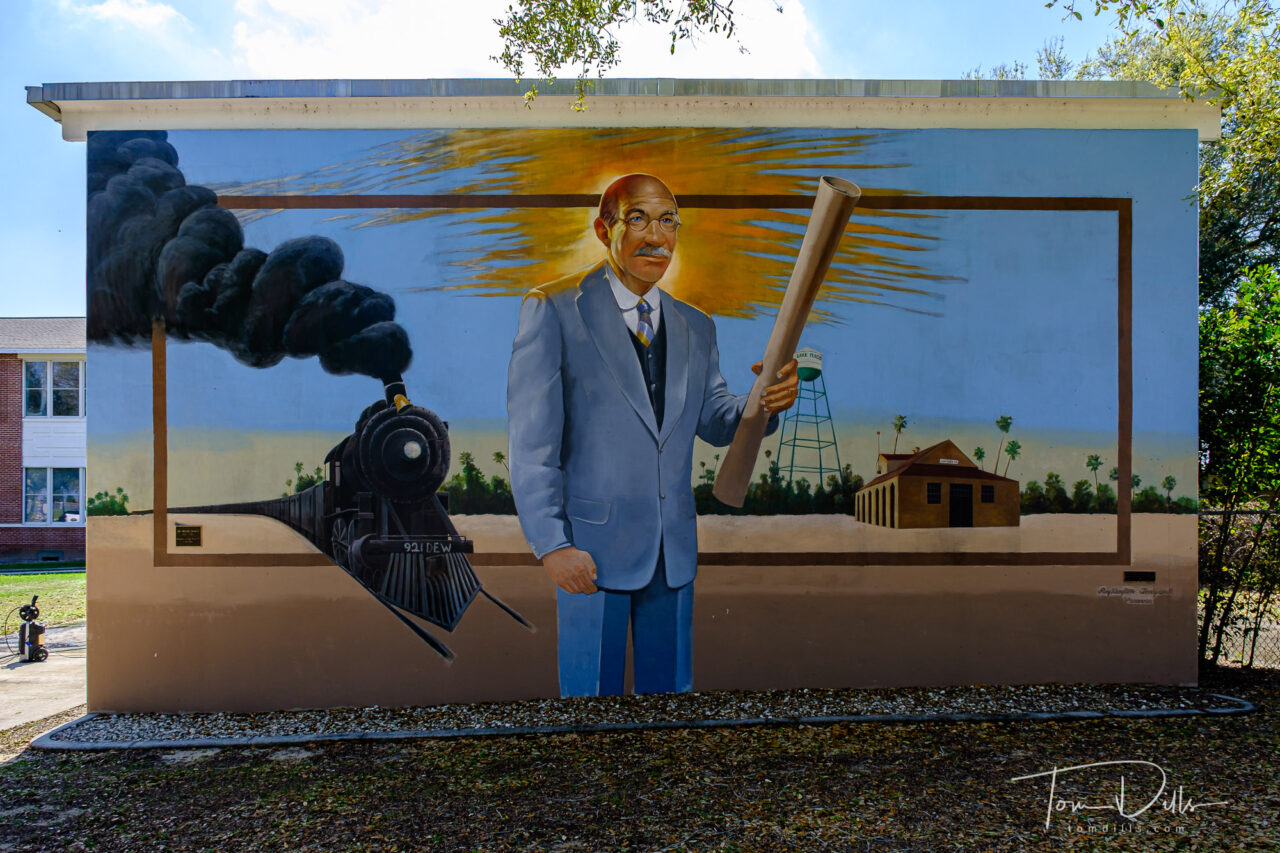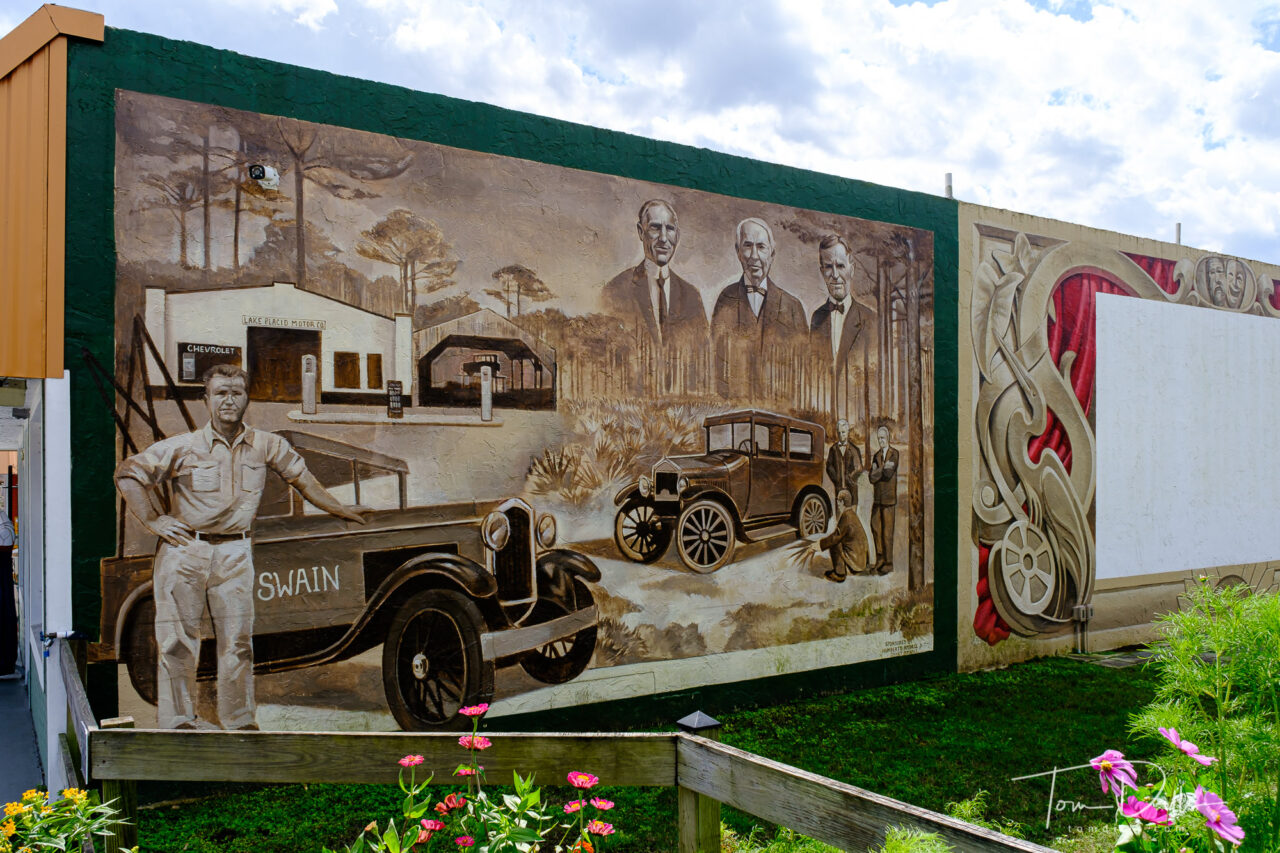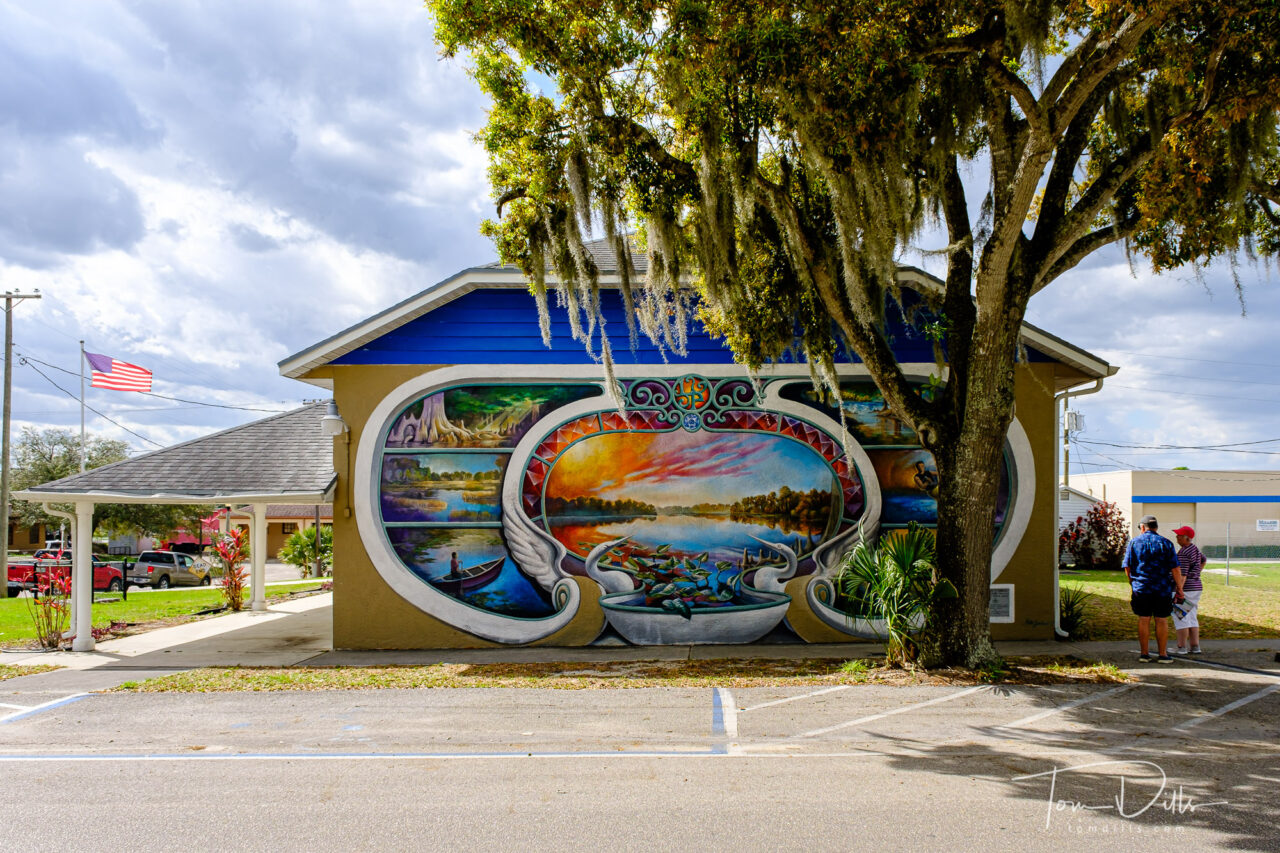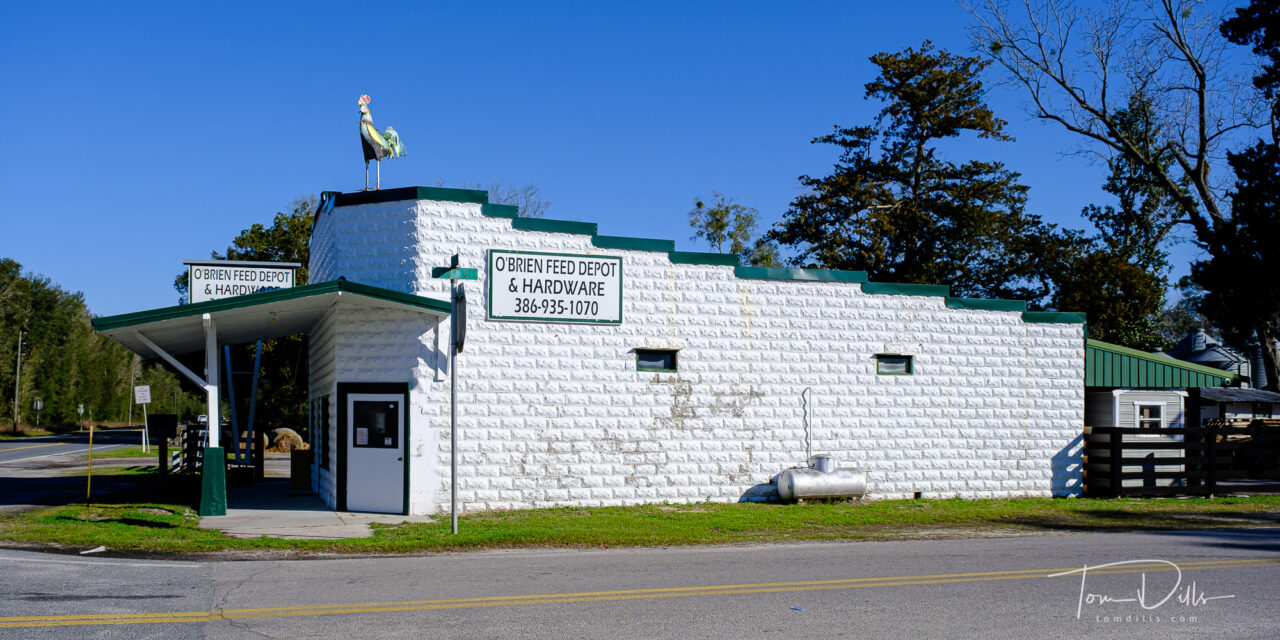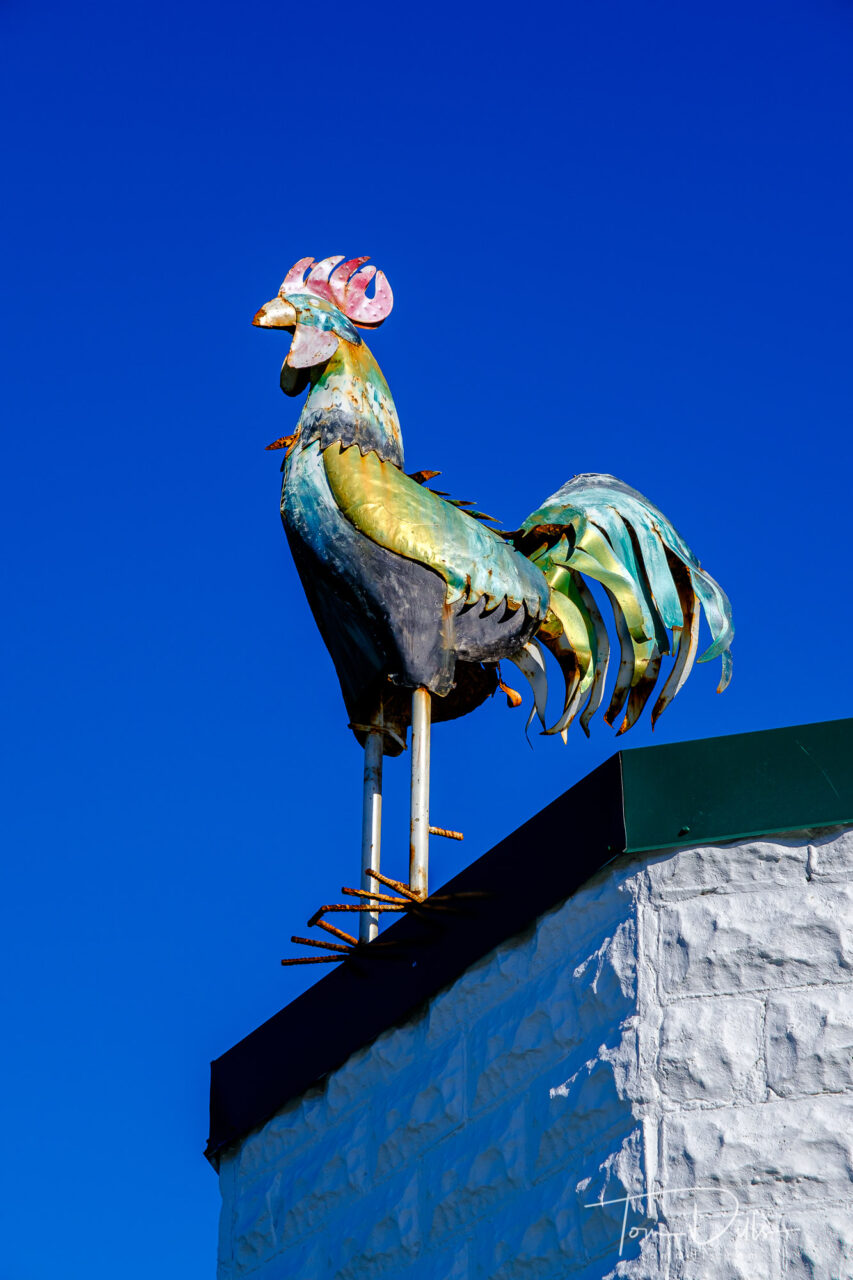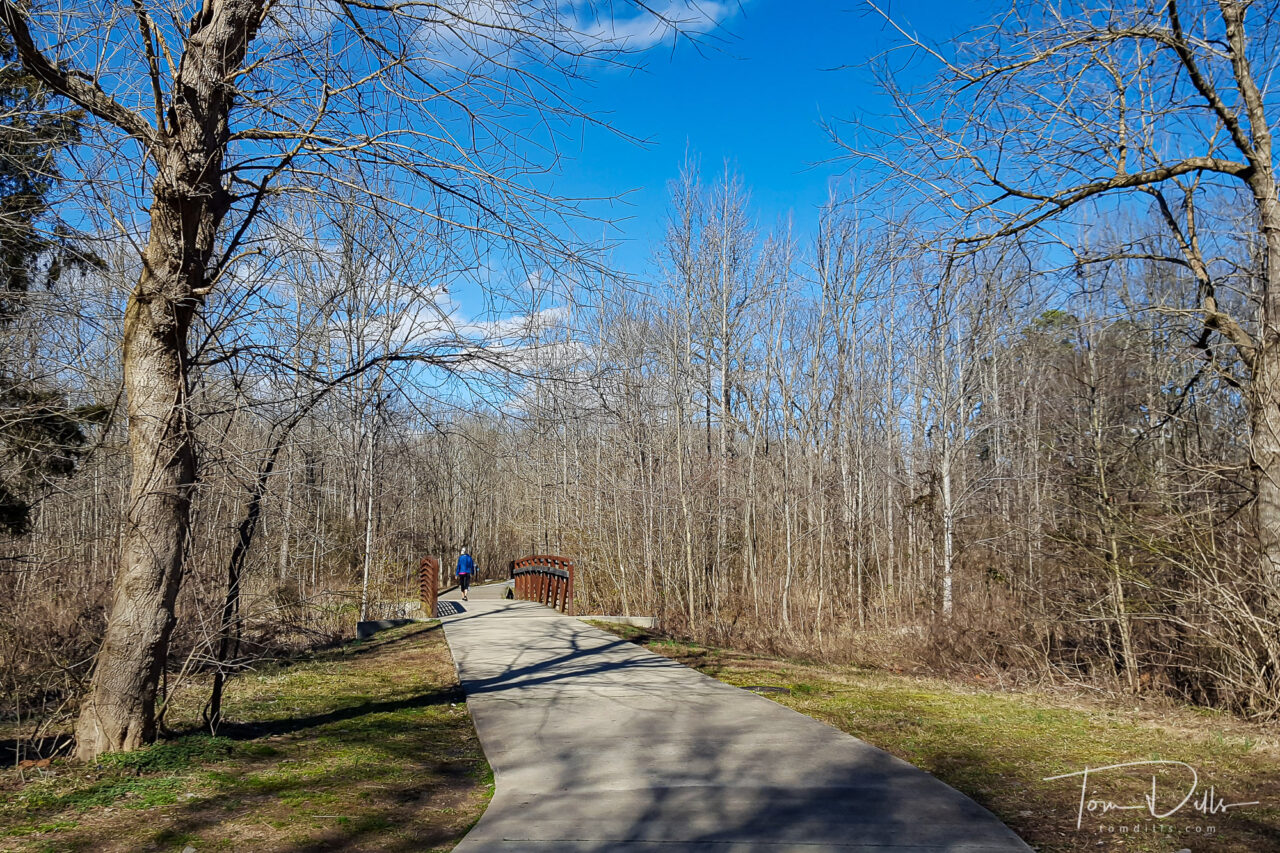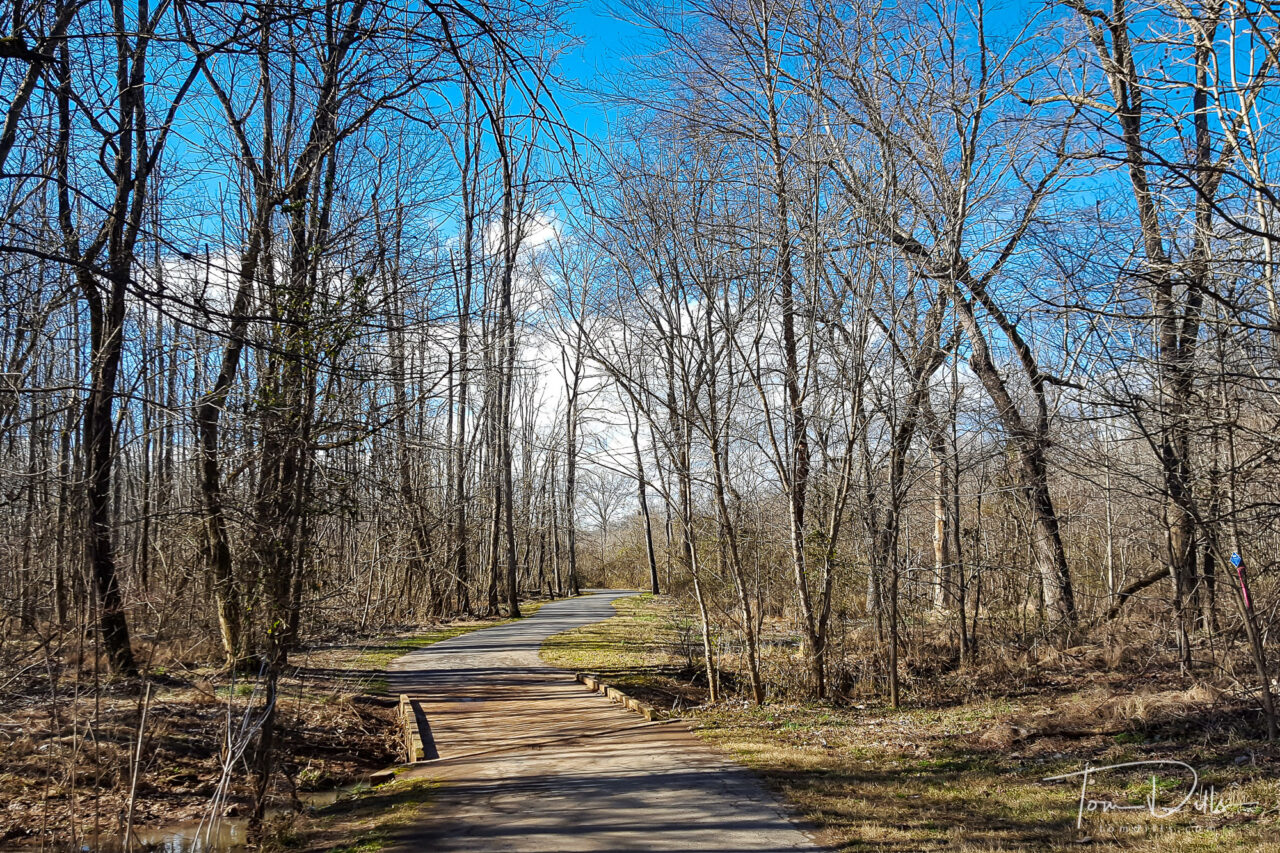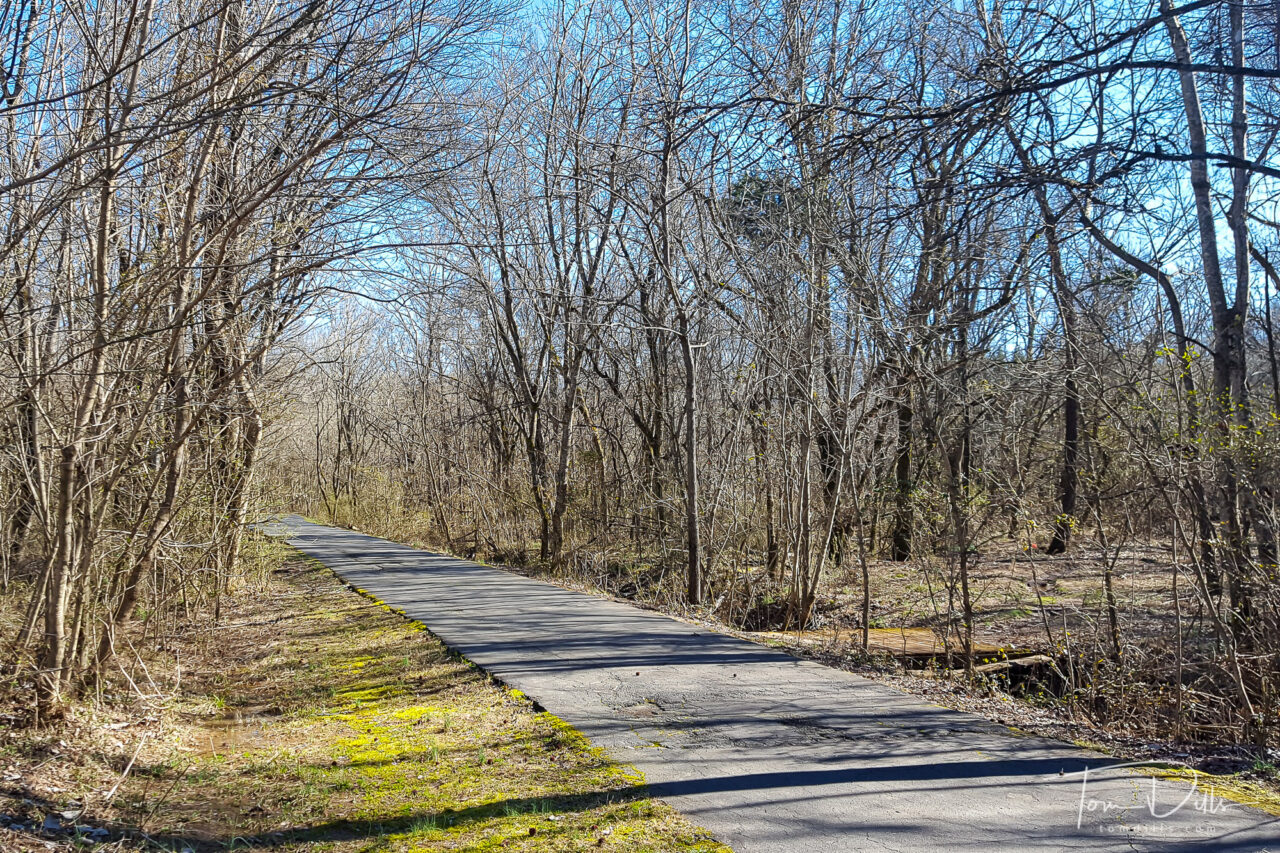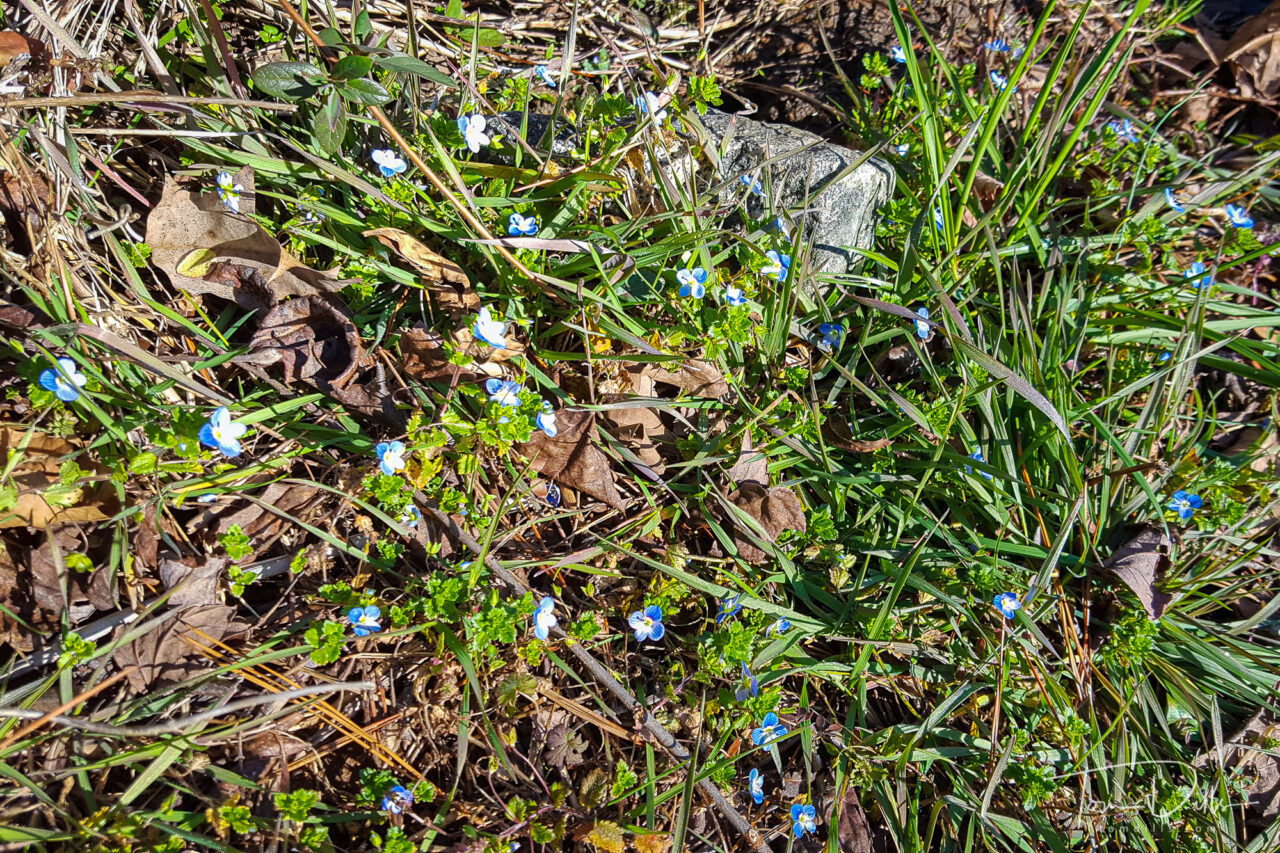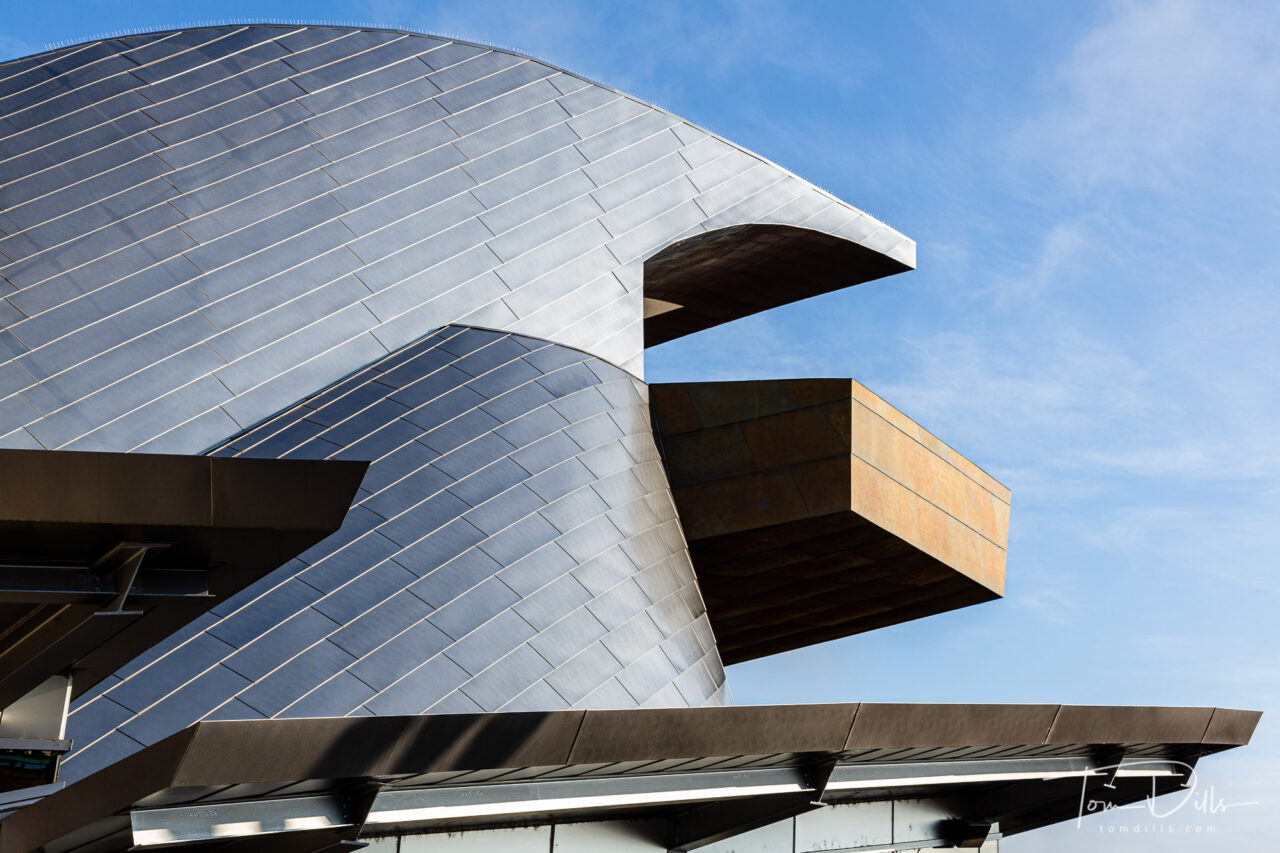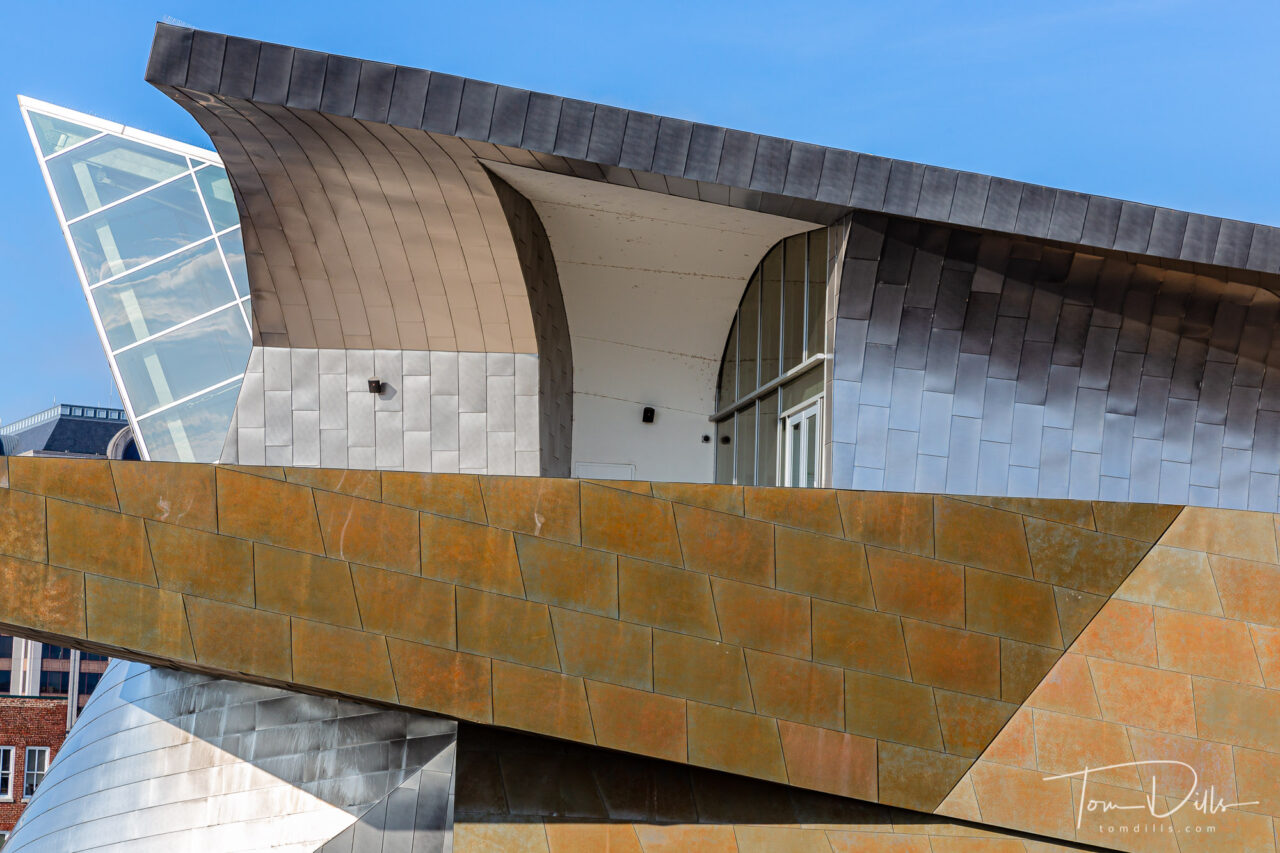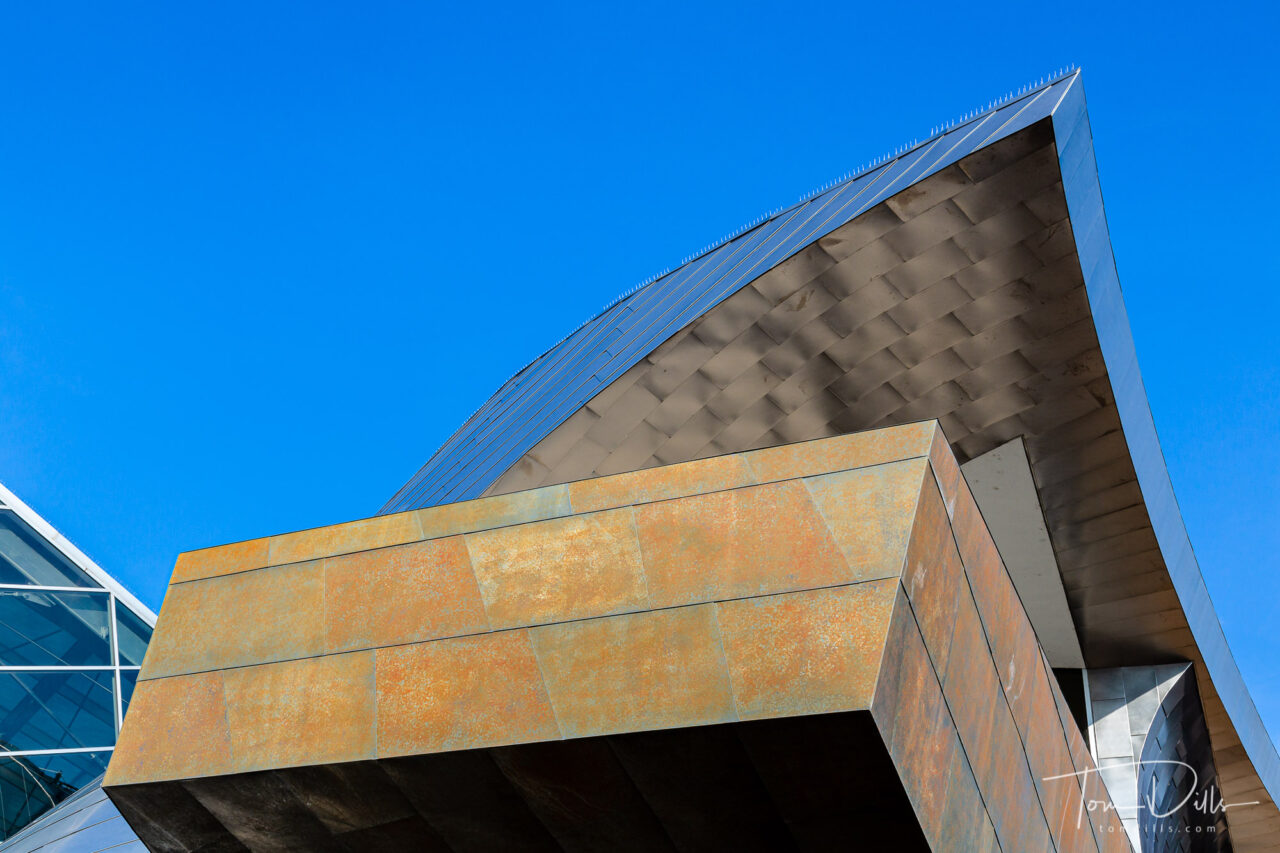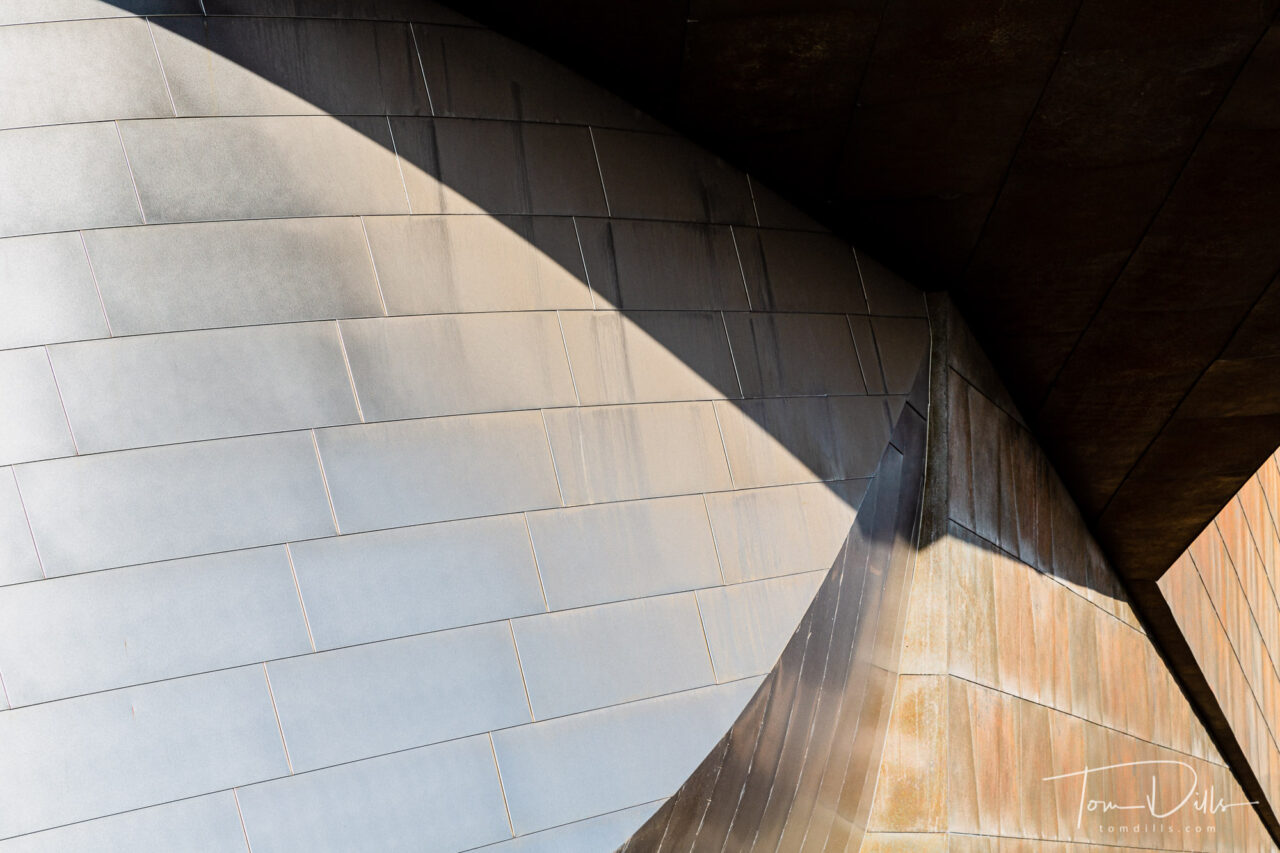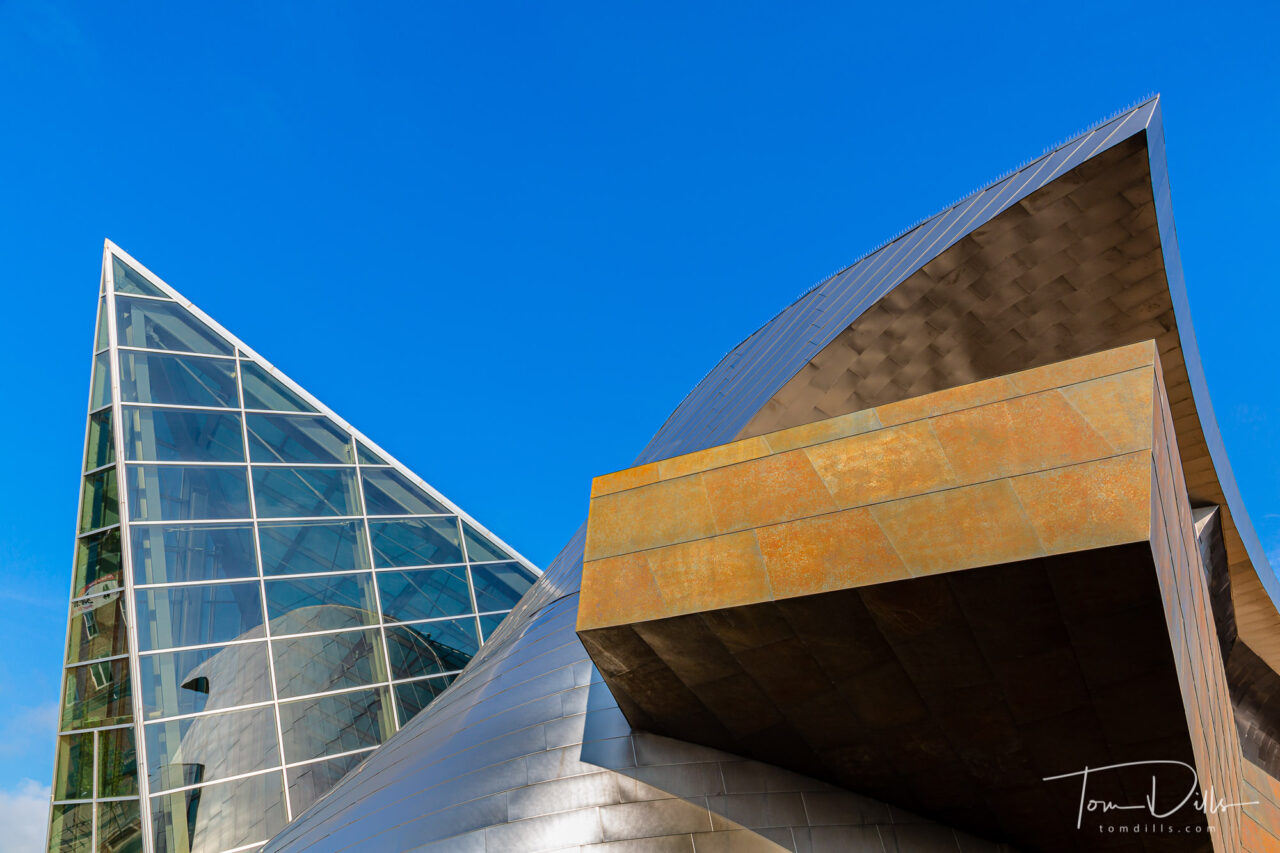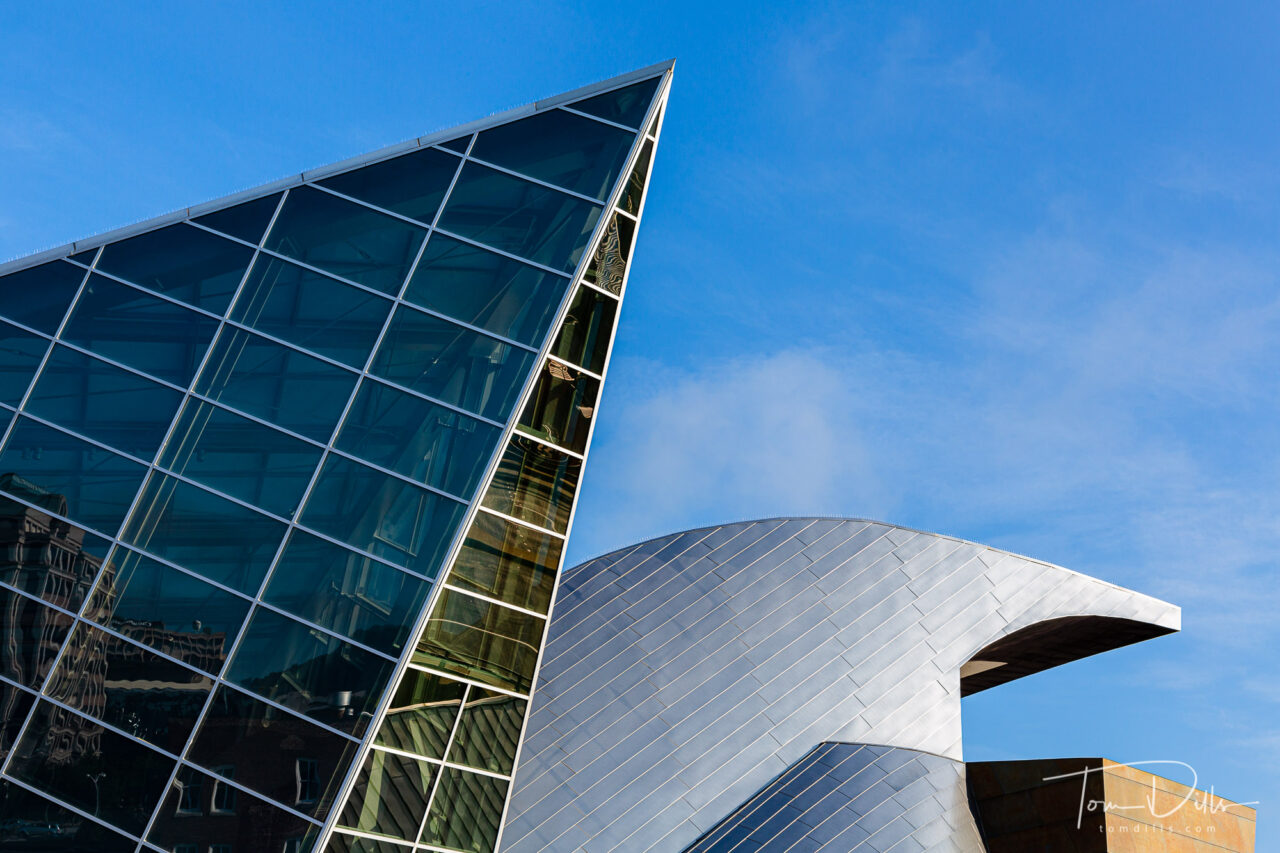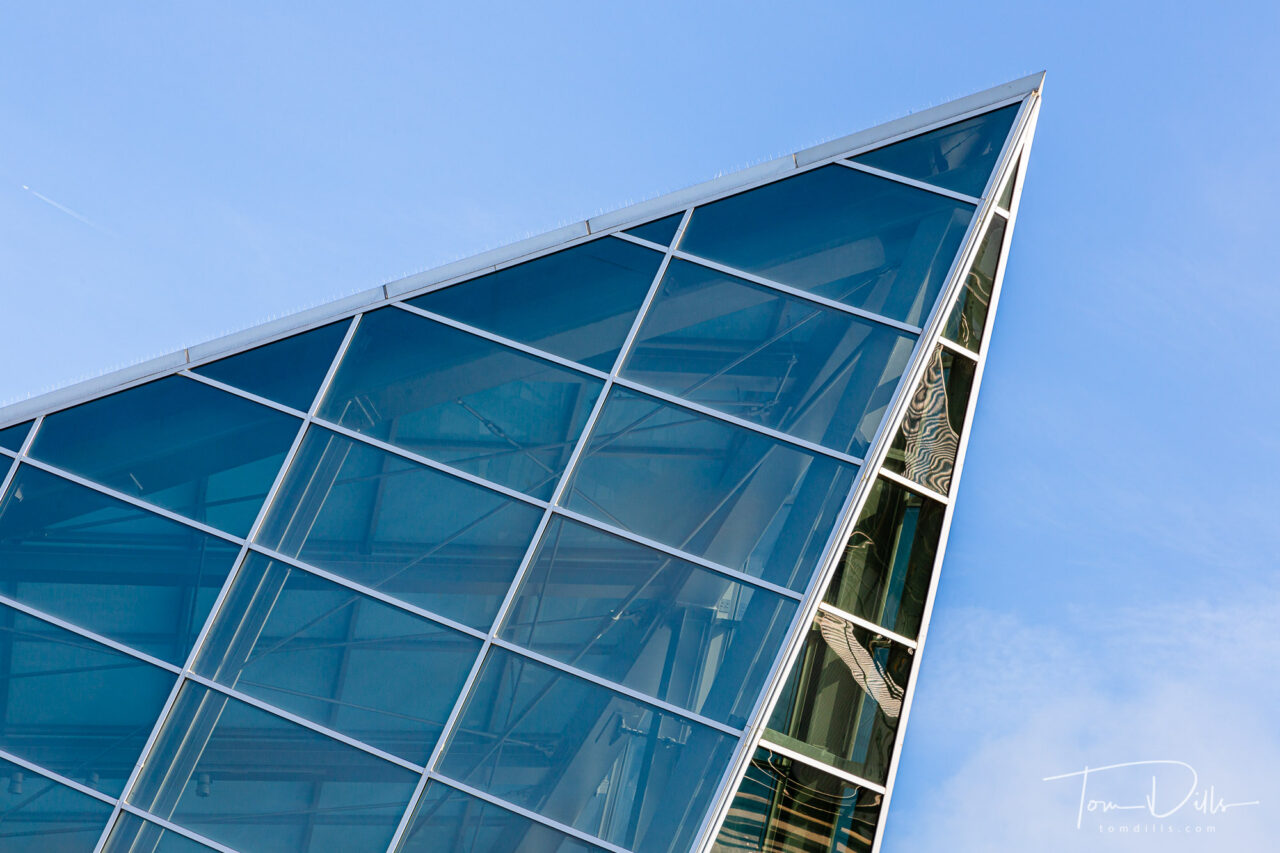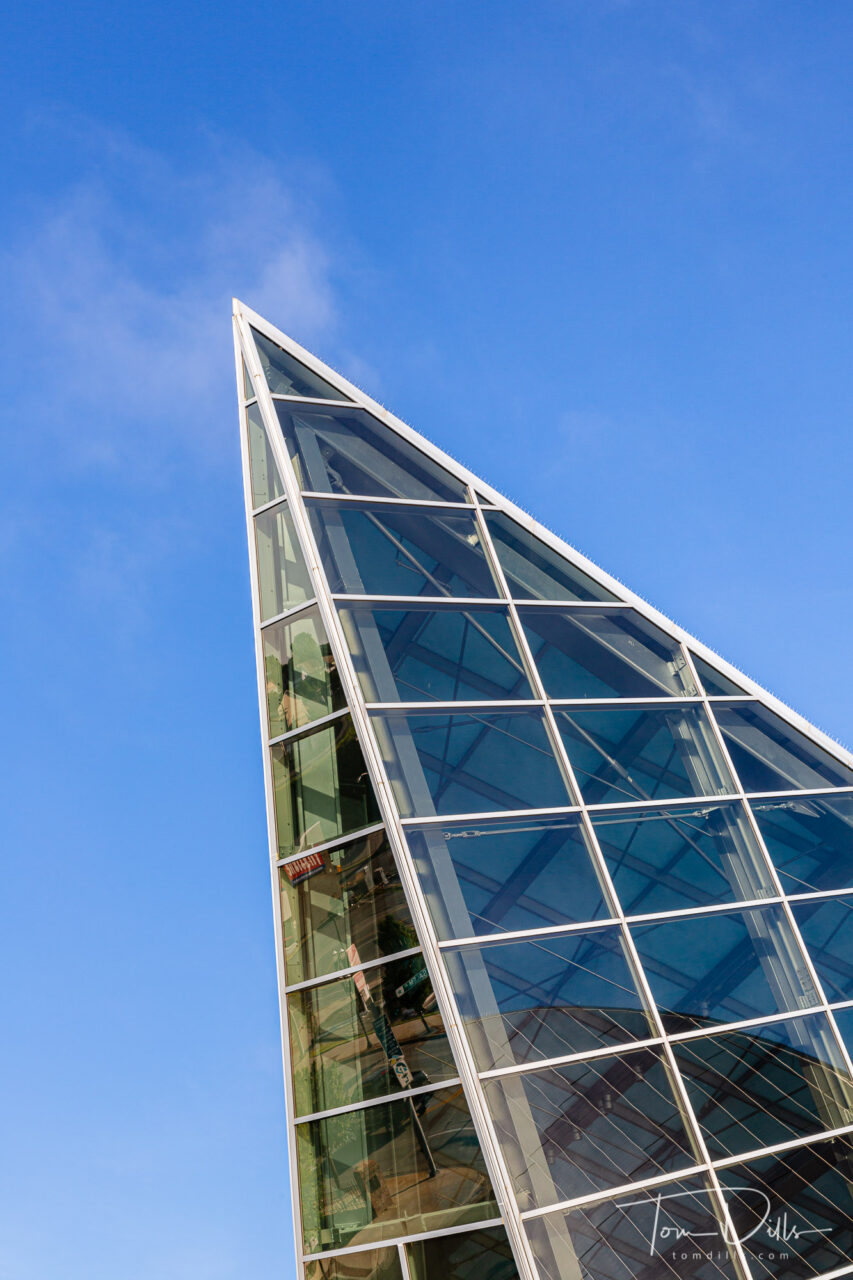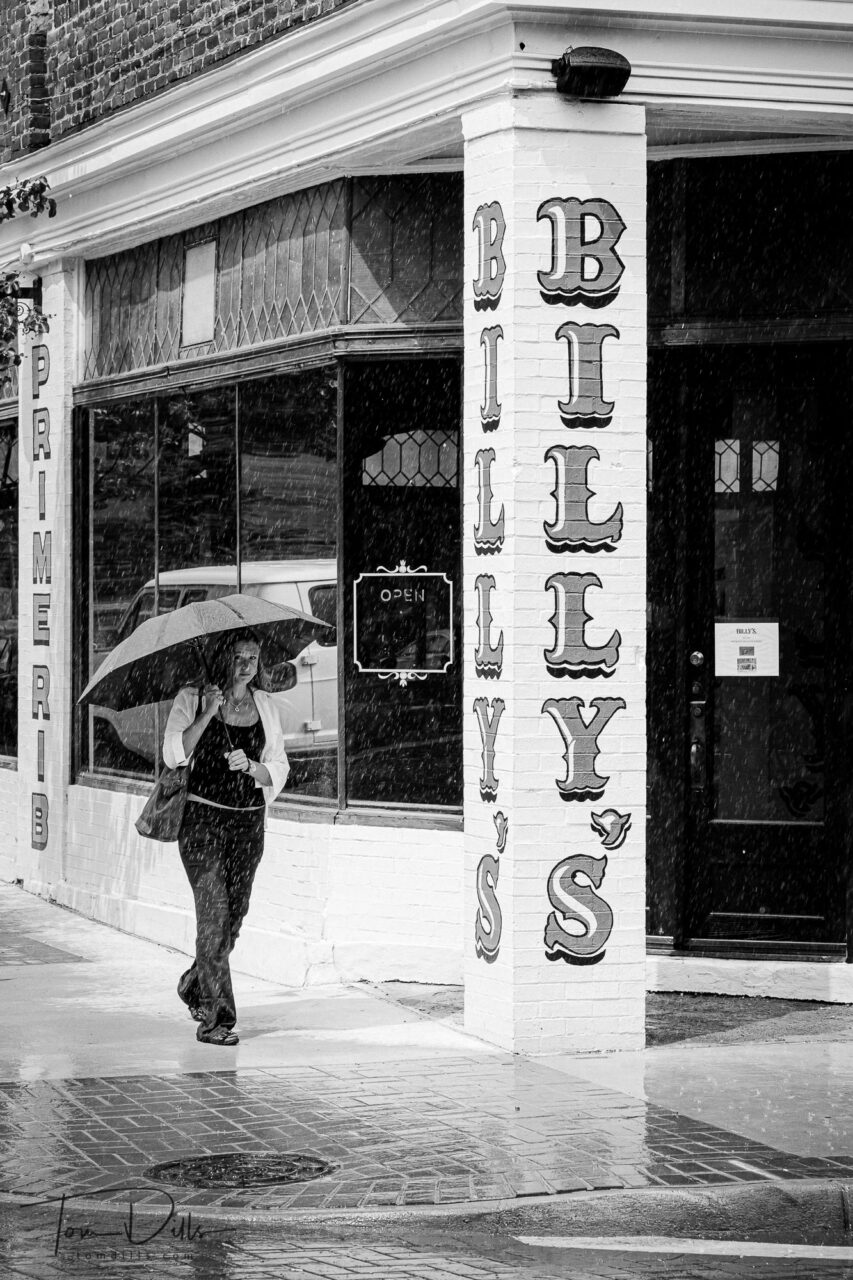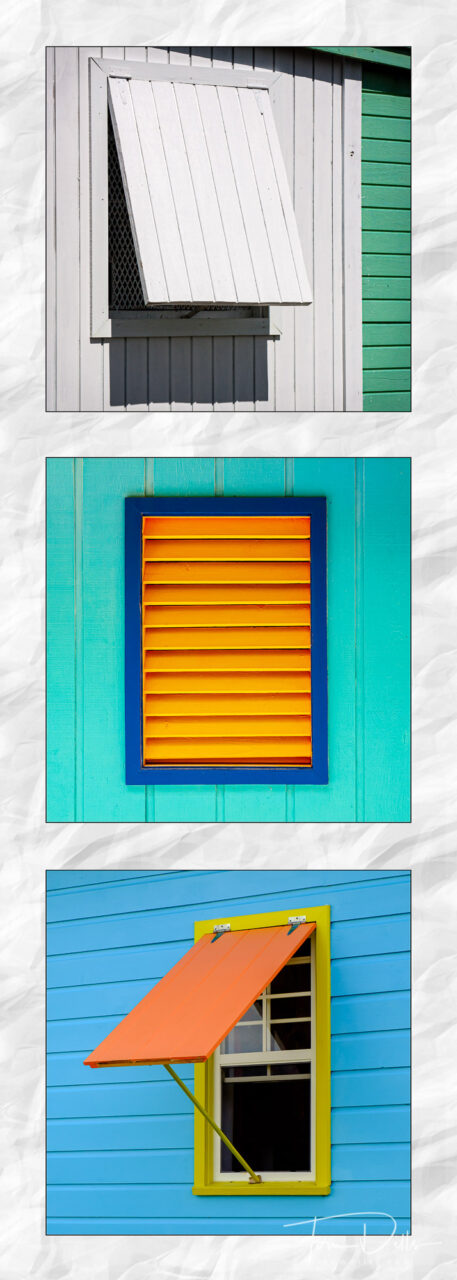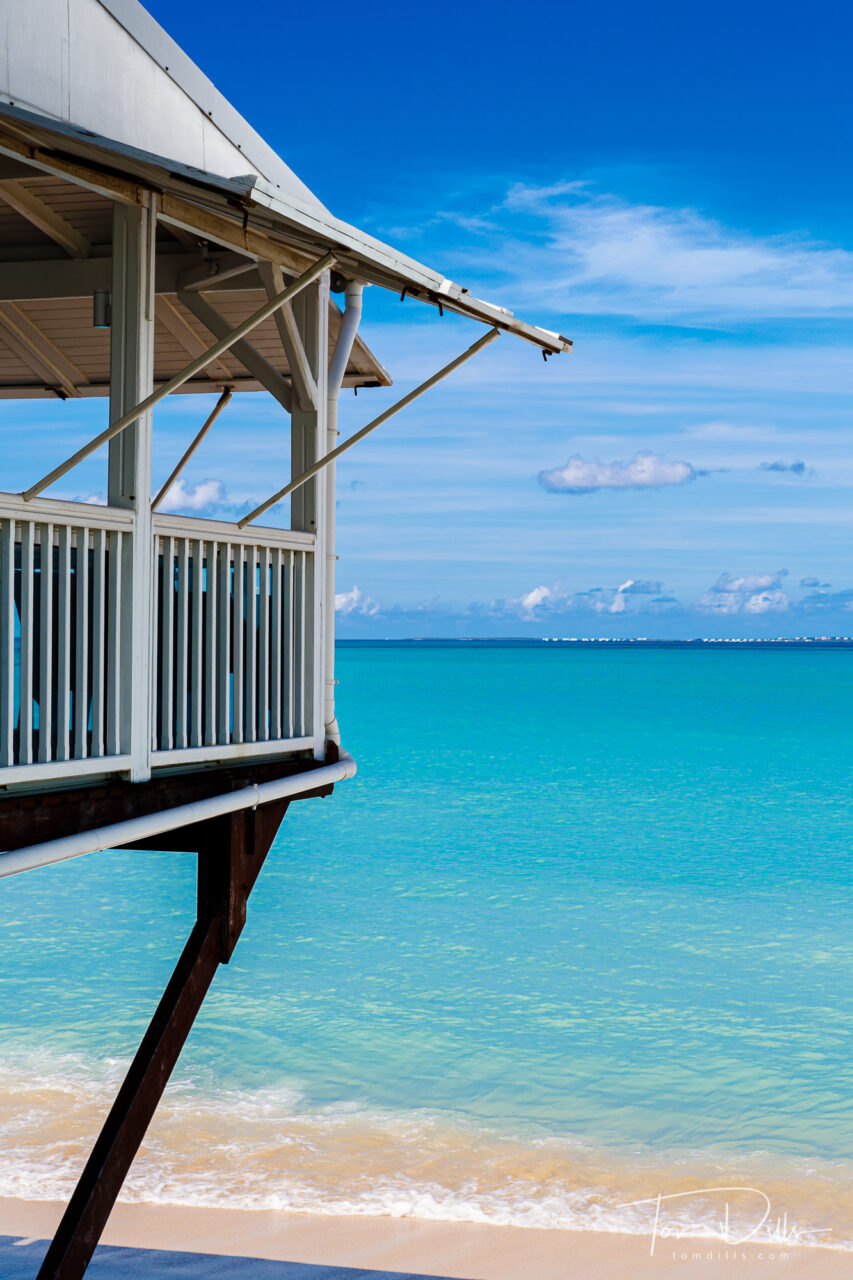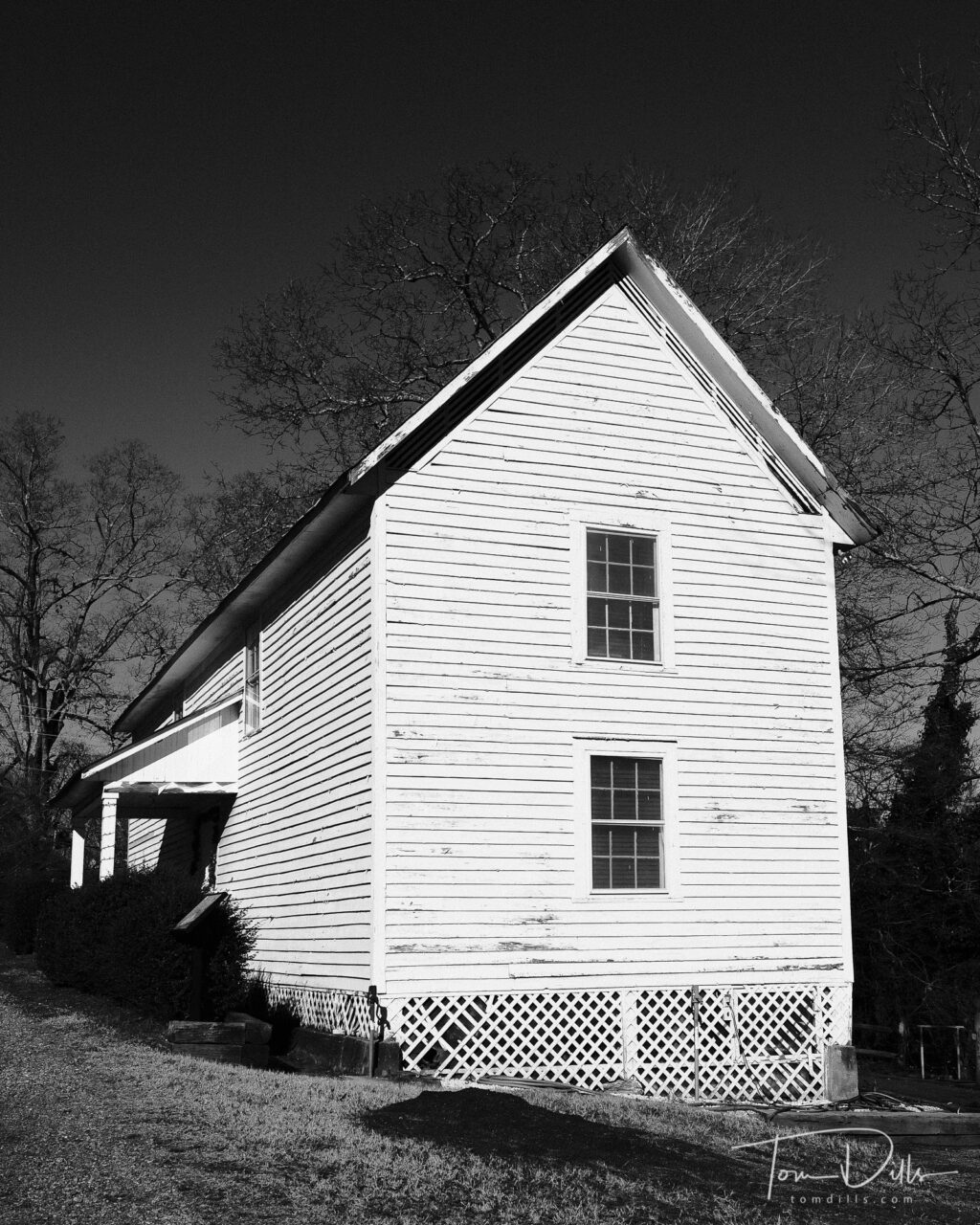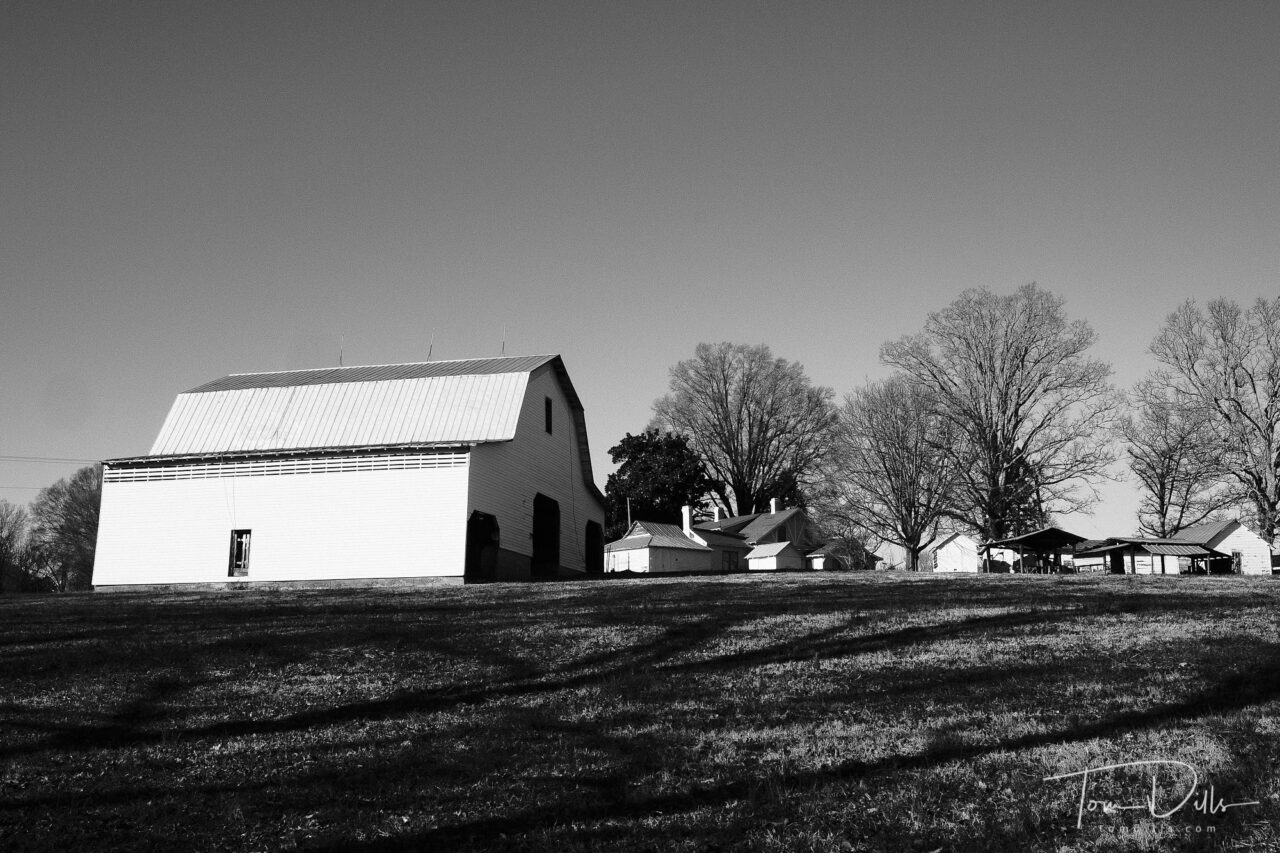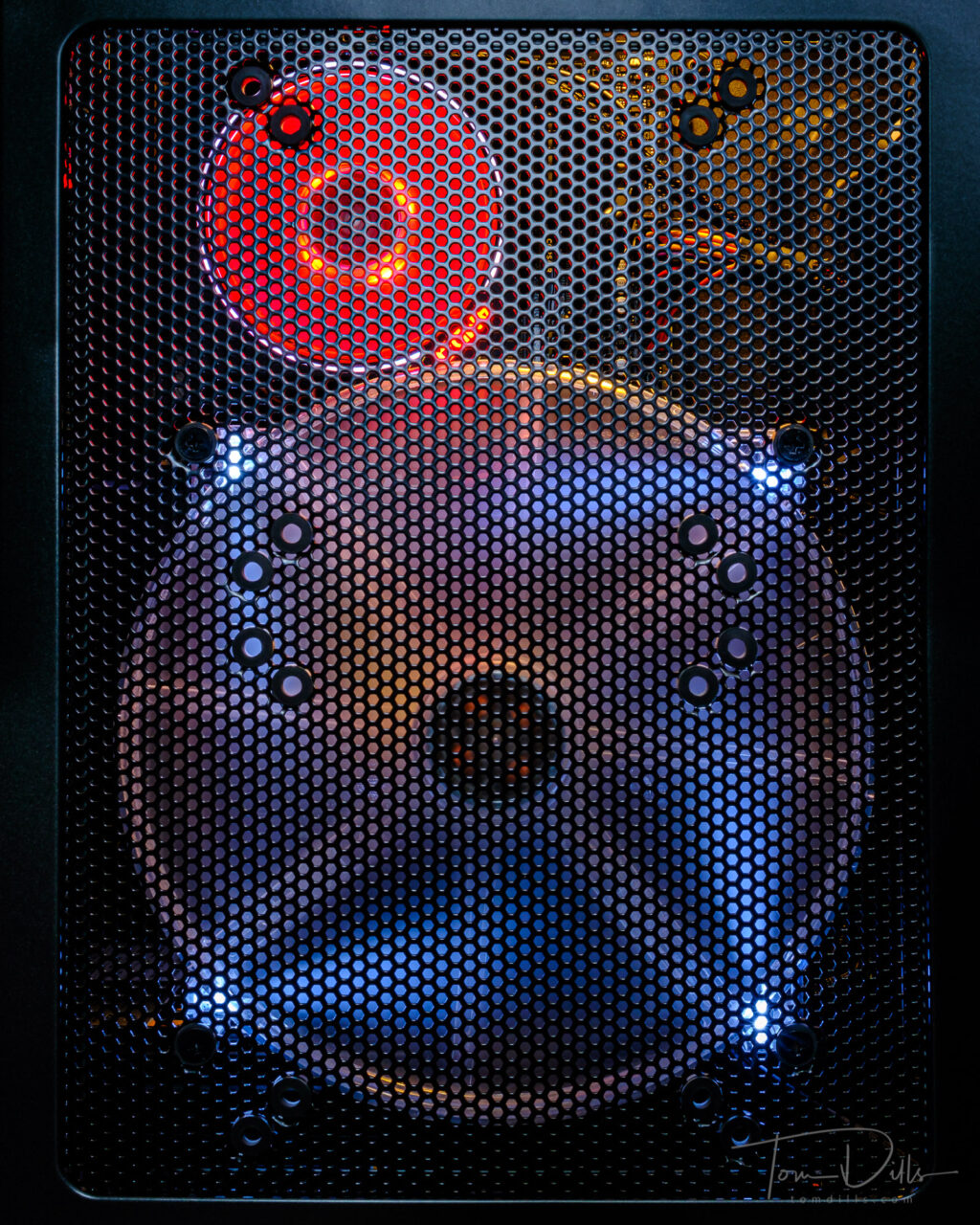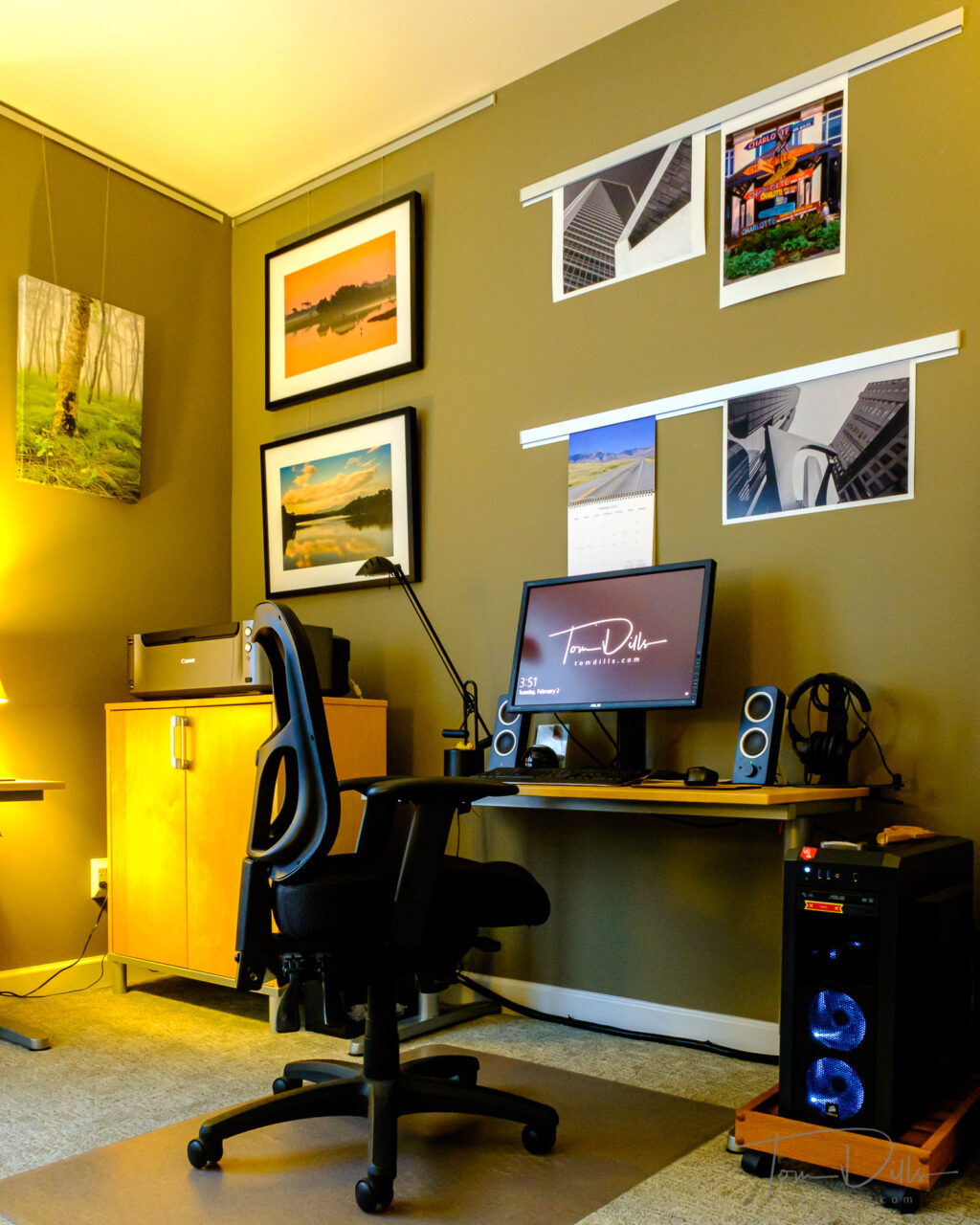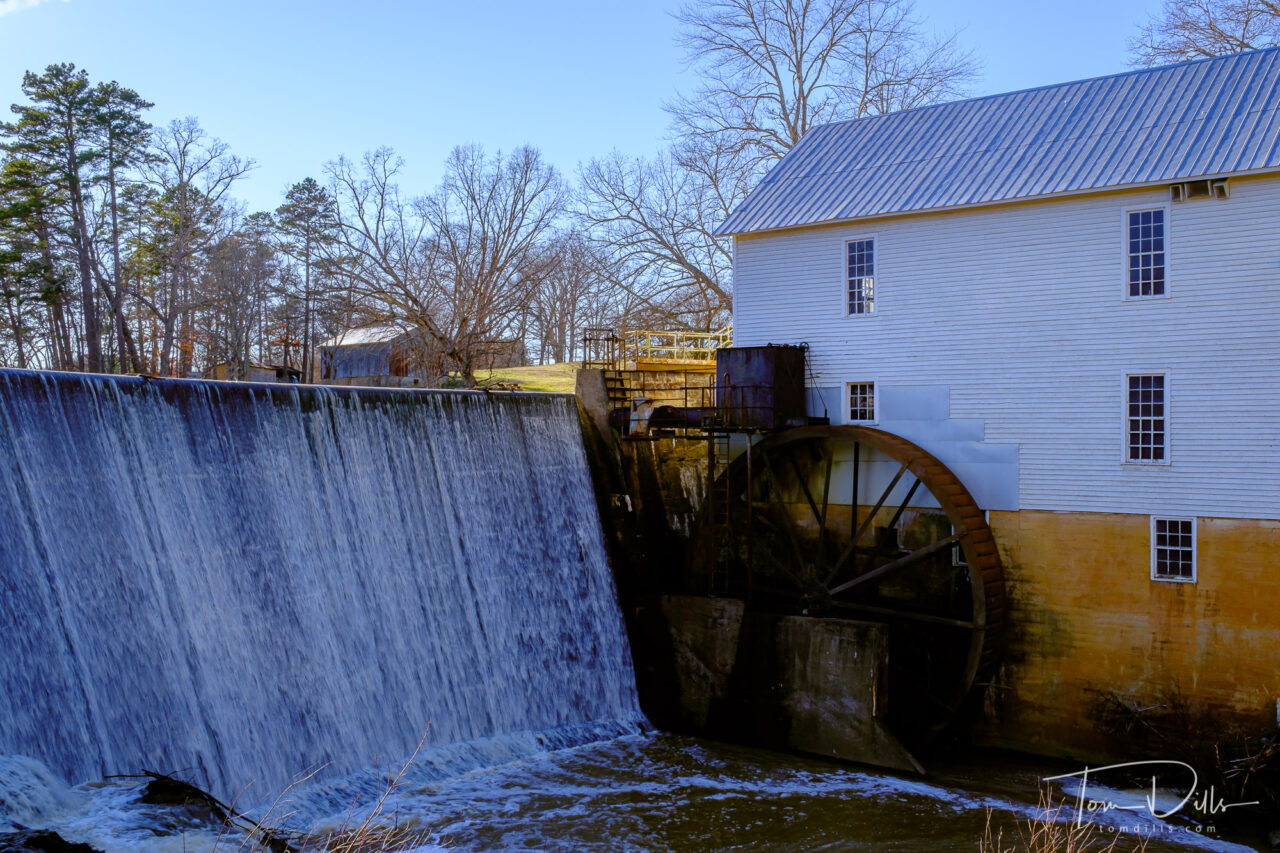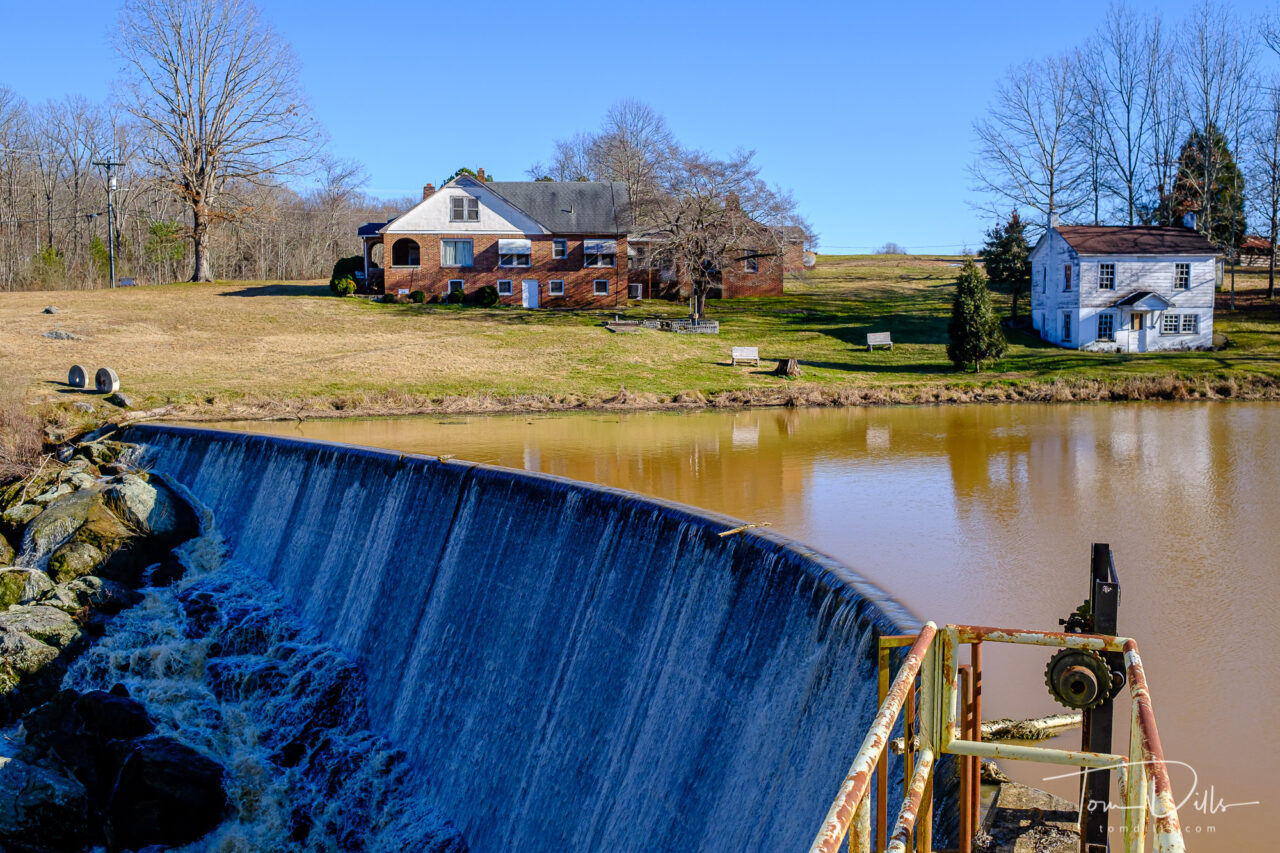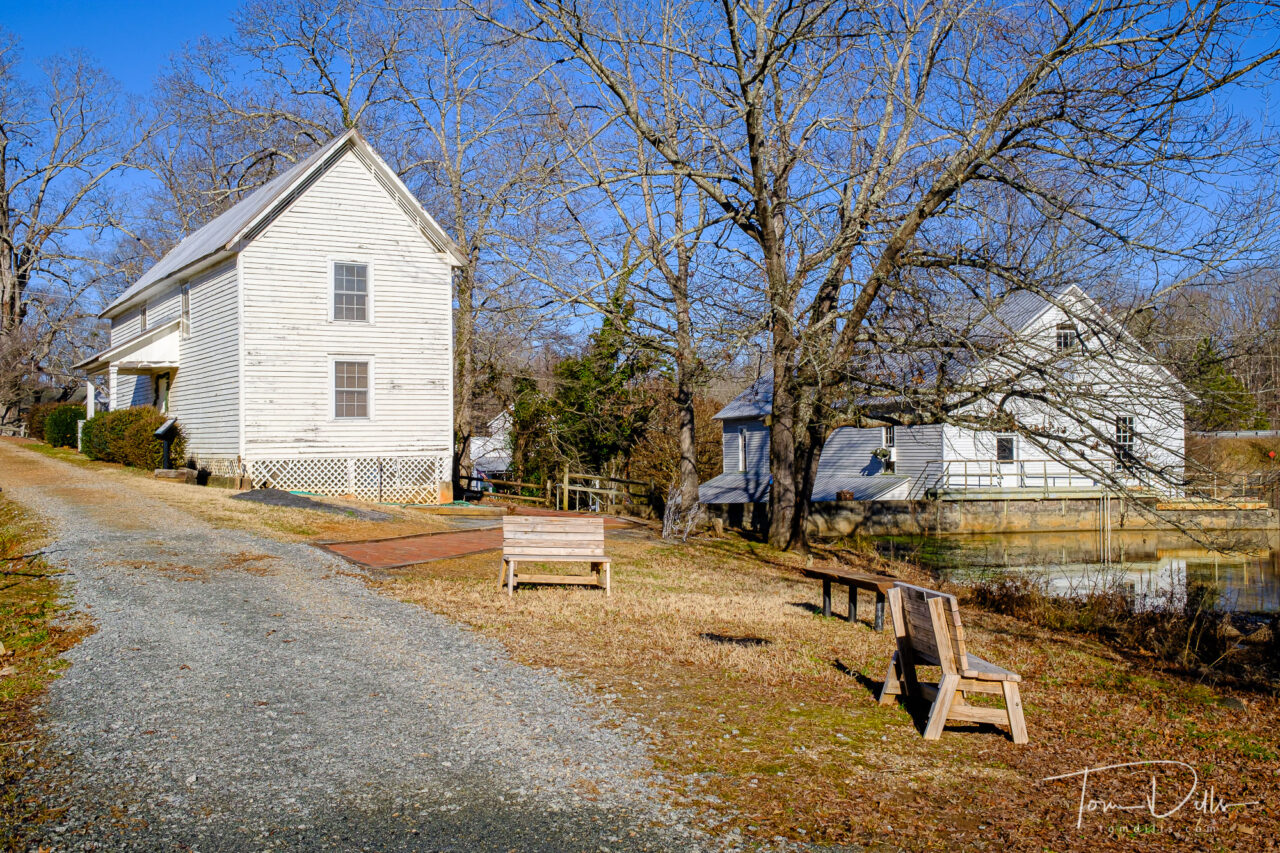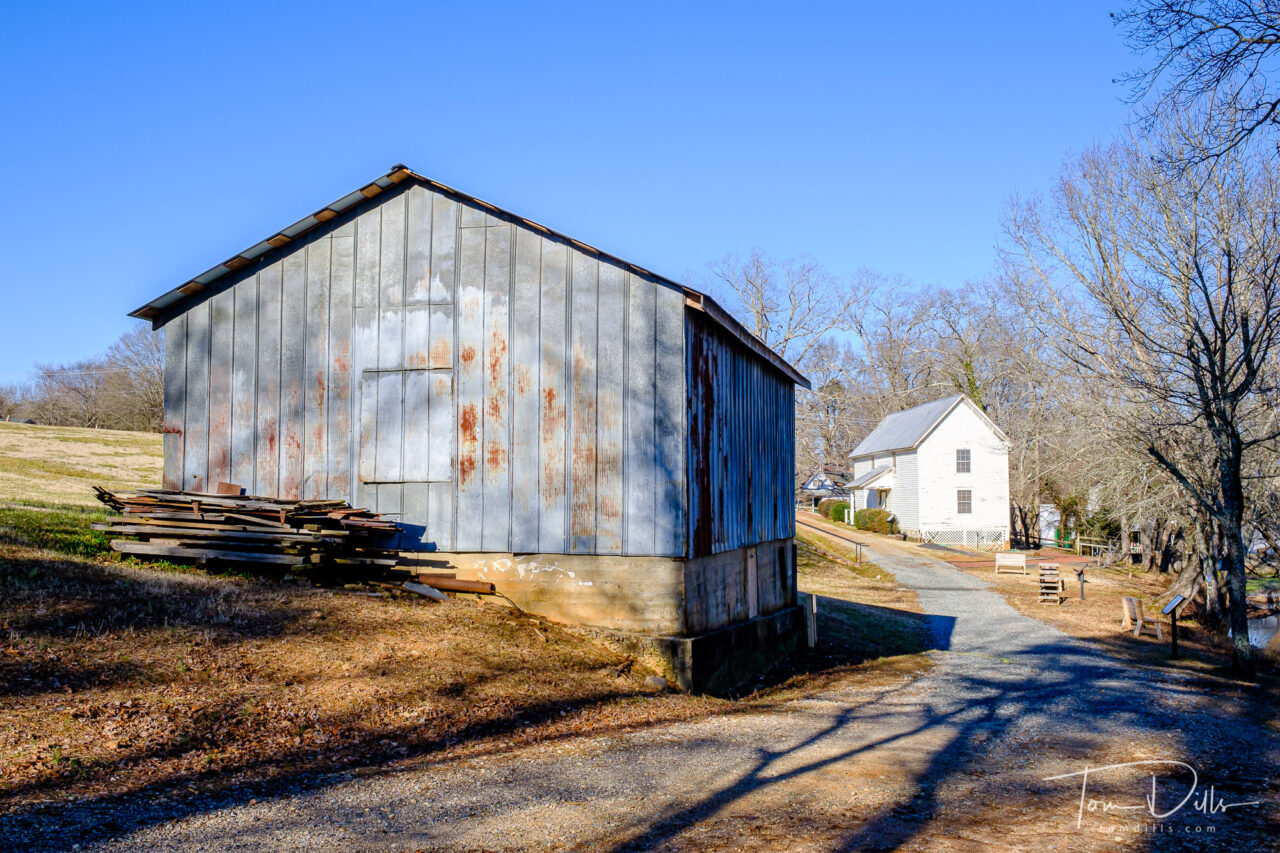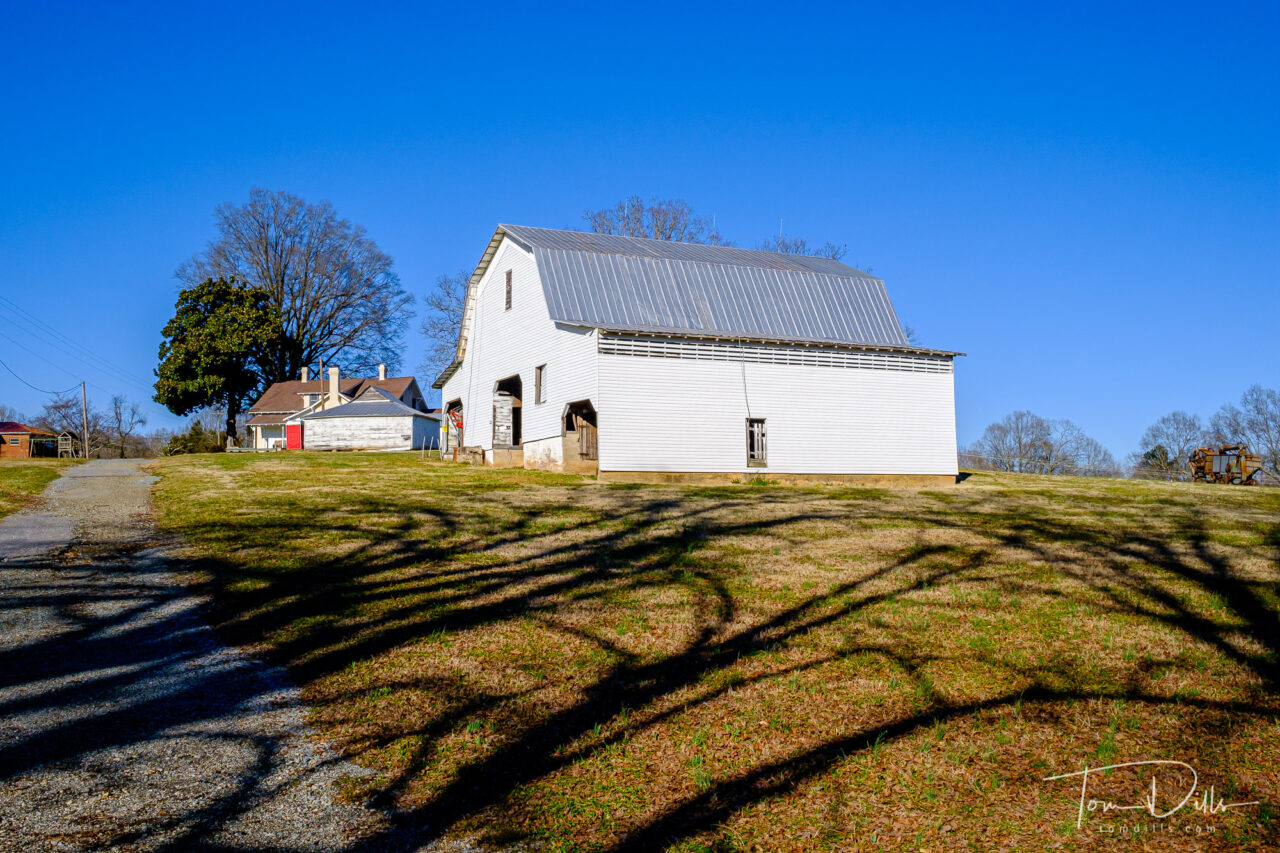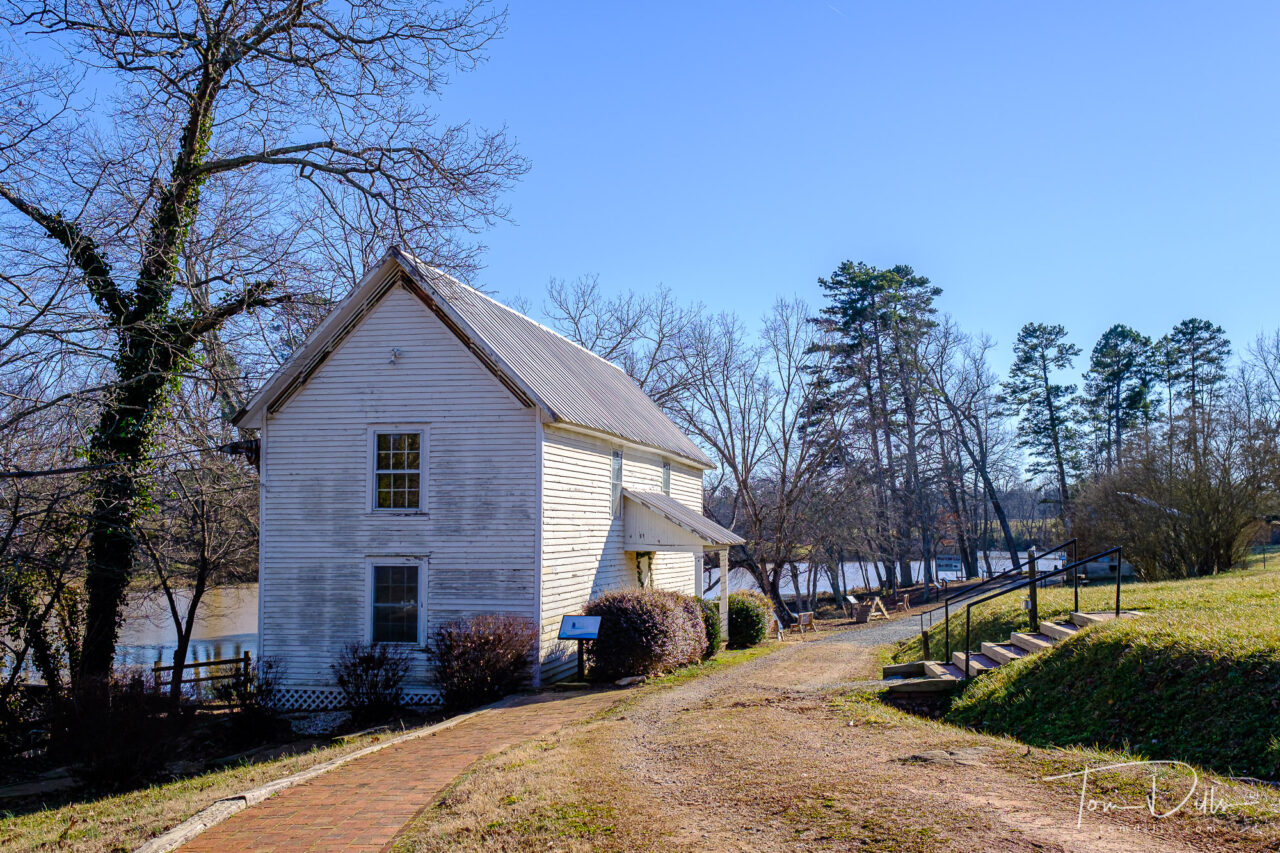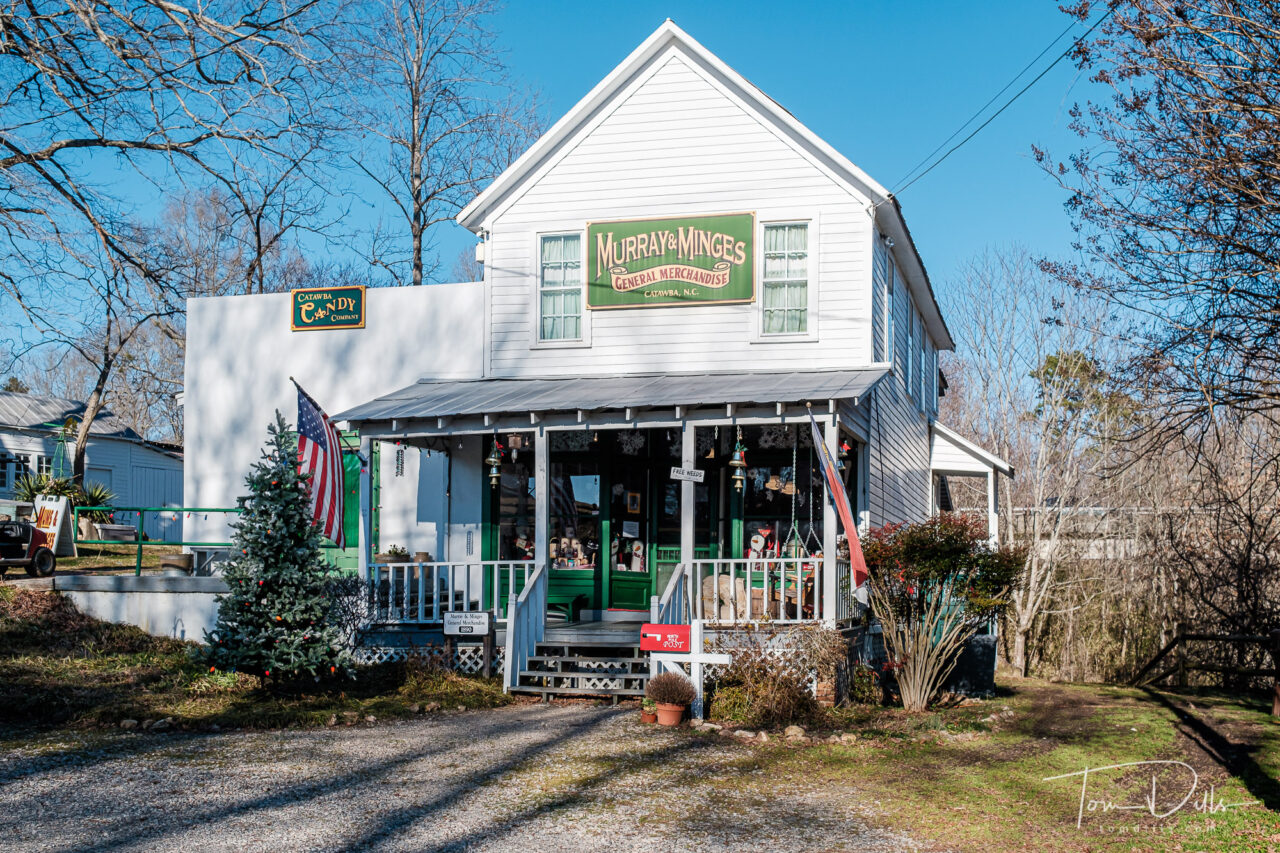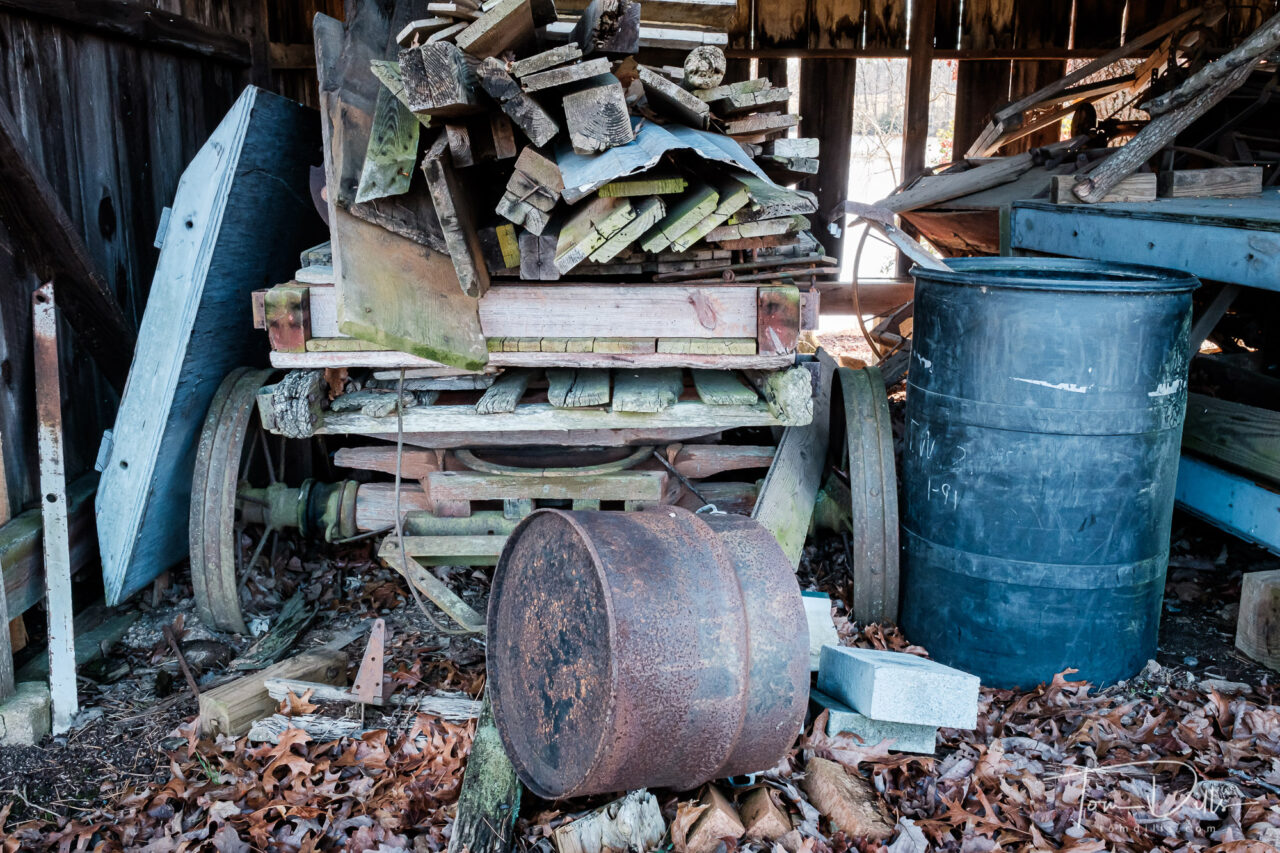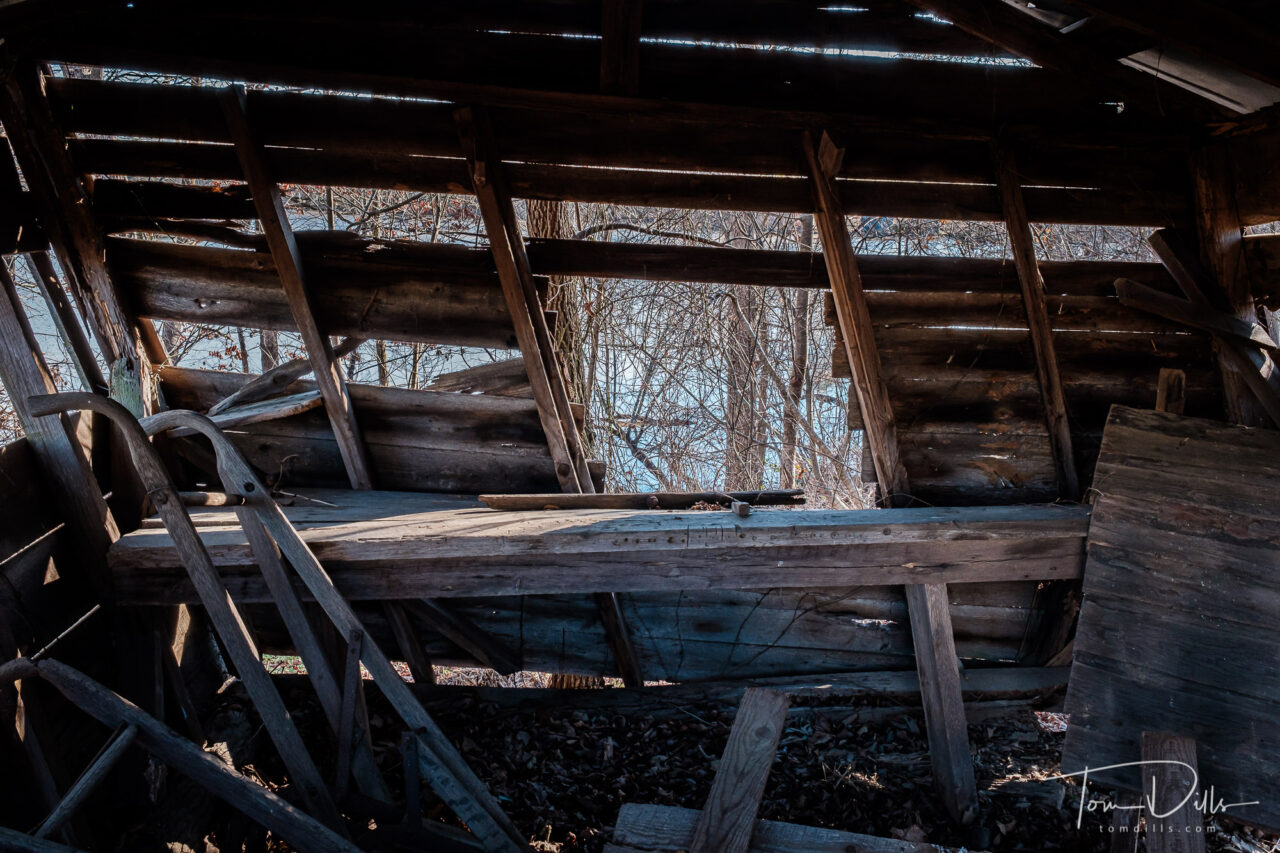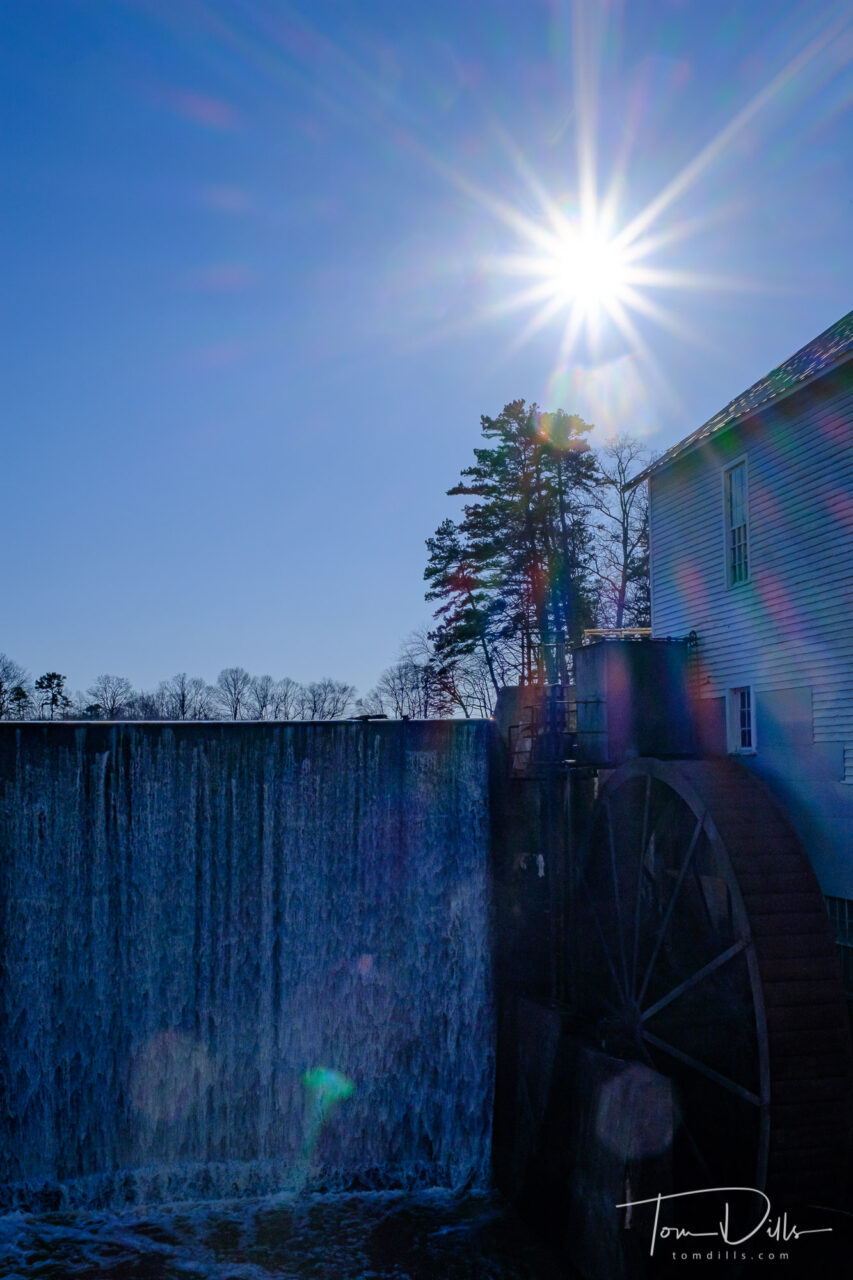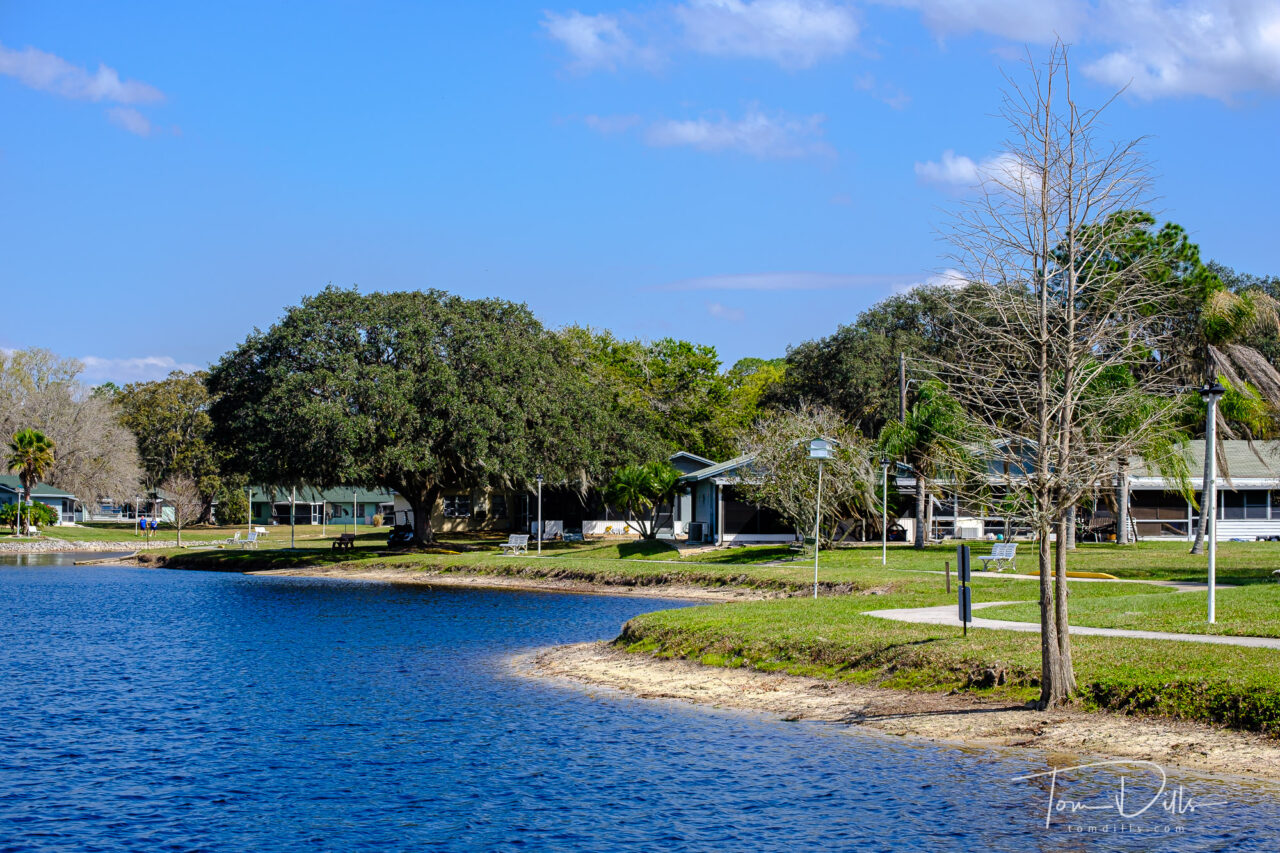
What would it be like to be the letter carrier for a community full of retired letter carriers? That’s a bit of a running joke in Nalcrest, that is a retirement community exclusively for retired mail carriers. Nalcrest was designed by and continues to be operated by the Nalcrest Foundation, Inc., a branch of the National Association of Letter Carriers, the union representing United States Postal Service city letter carriers. It was the brainchild of William Doherty, the first United States Ambassador to Jamaica and NALC President from 1941–1962.
The community consists of 253 acres, 153 acres of which are developed into 500 garden-style apartments. The remaining 100 acres (0.4 km2) are undeveloped and includes a manmade lake of 15 acres around which the community is developed, and that is connected to the 7,500 acre Lake Weohyakapka.
We have friends who spend the winter there, and this is the third year we have visited. It’s an interesting place with many friendly people from all over the US and Canada. But you won’t find any dogs or cats. Evidently the story about dogs and mail carriers not getting along is true.
